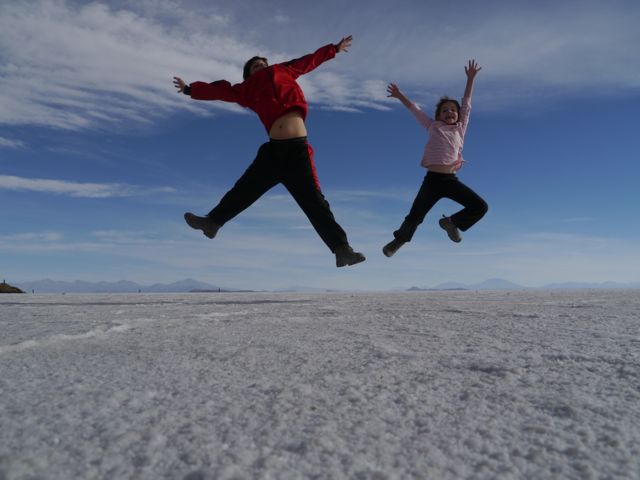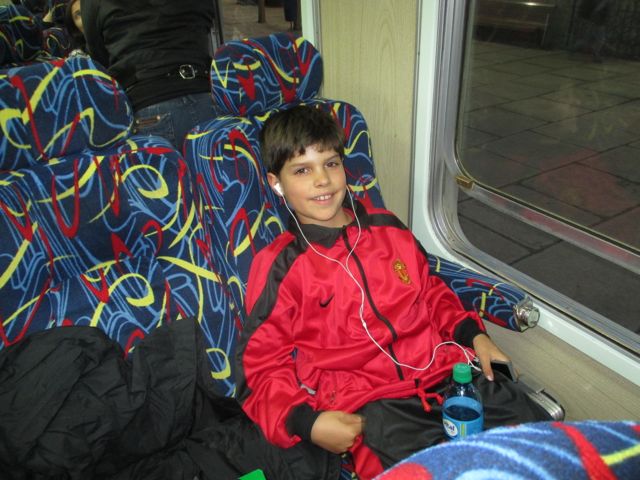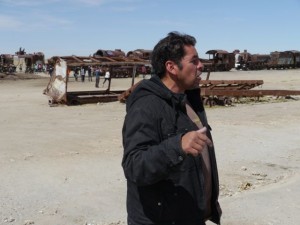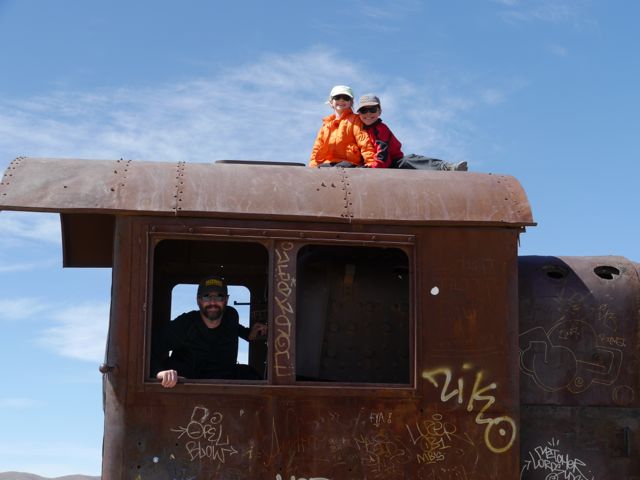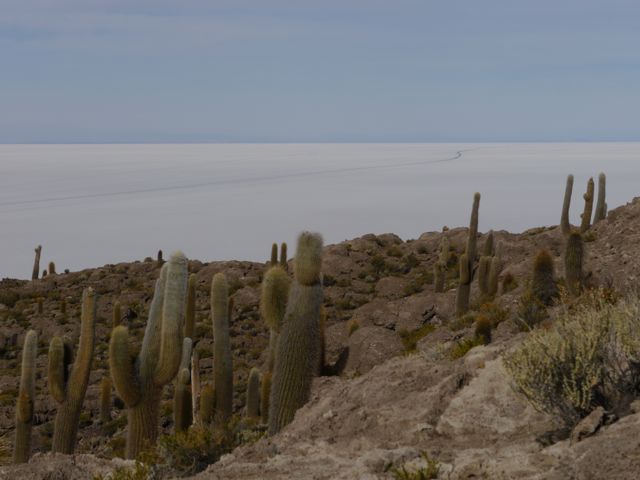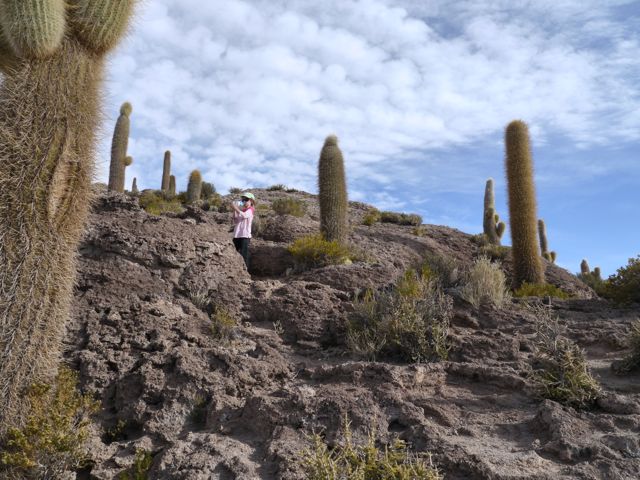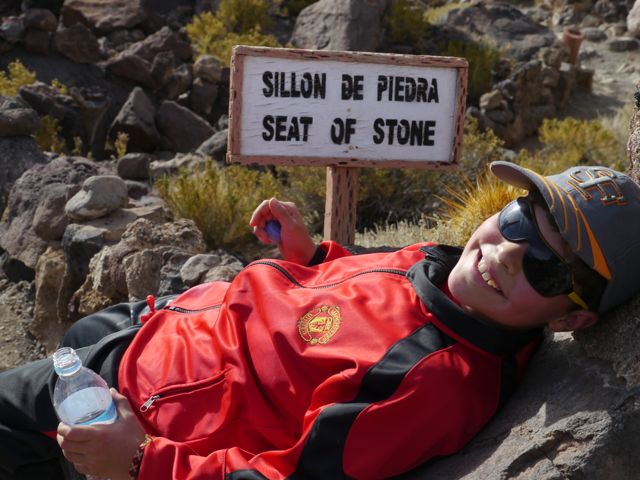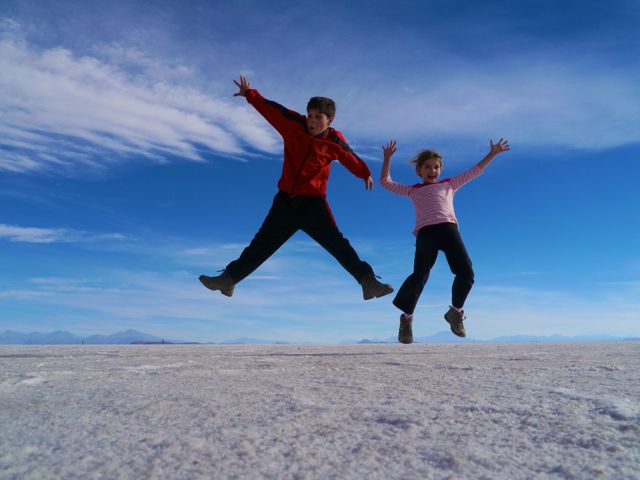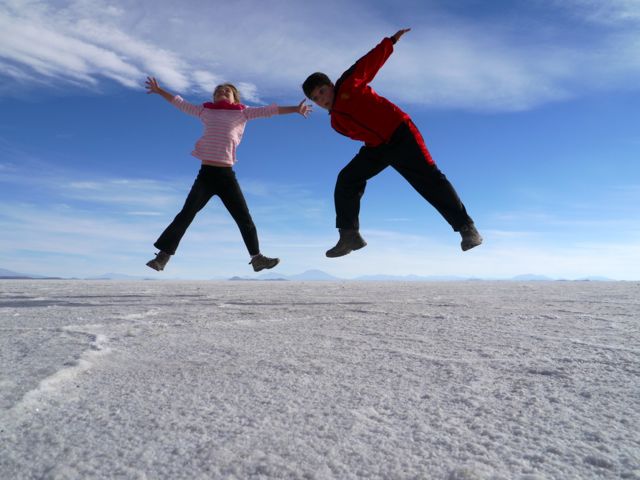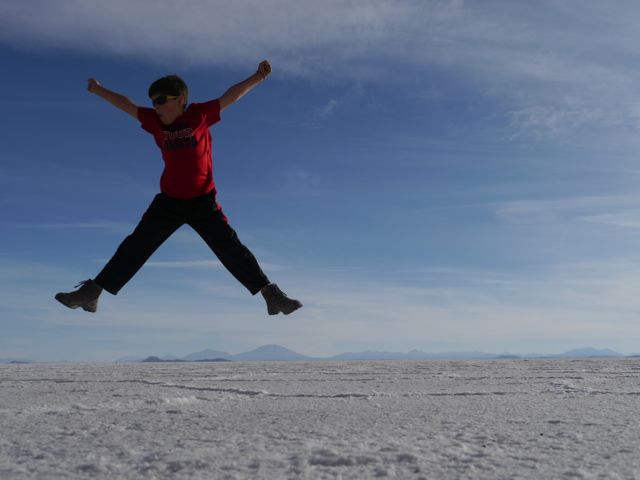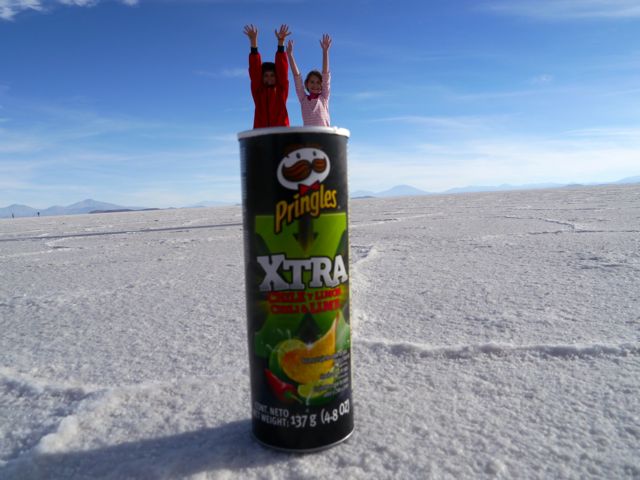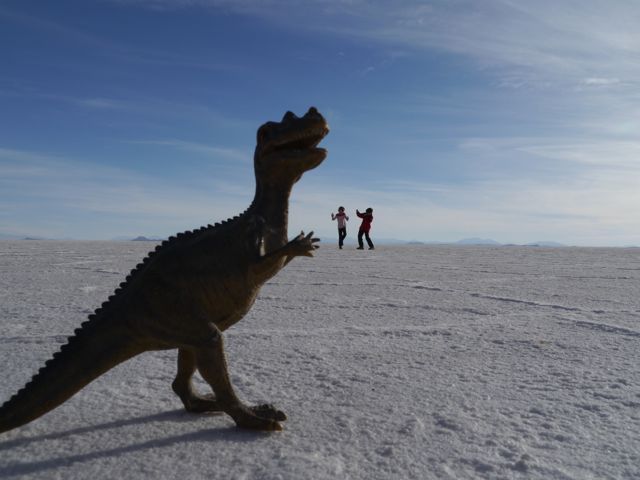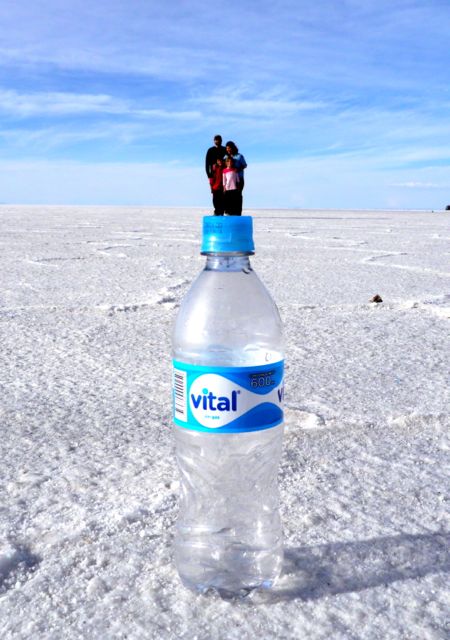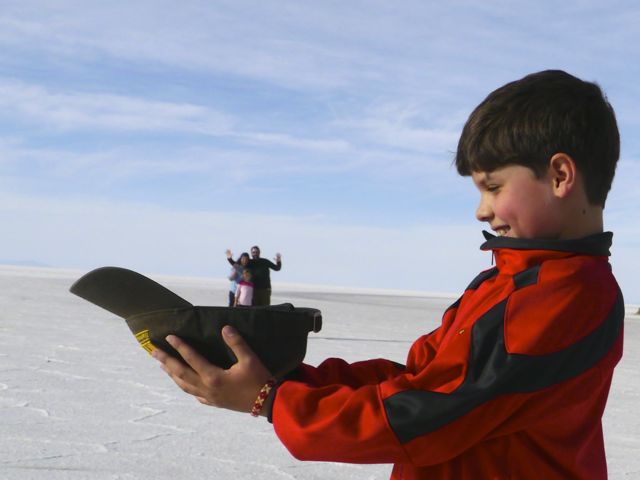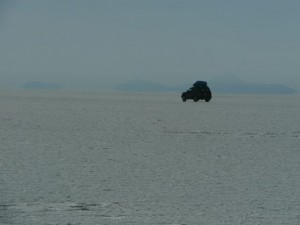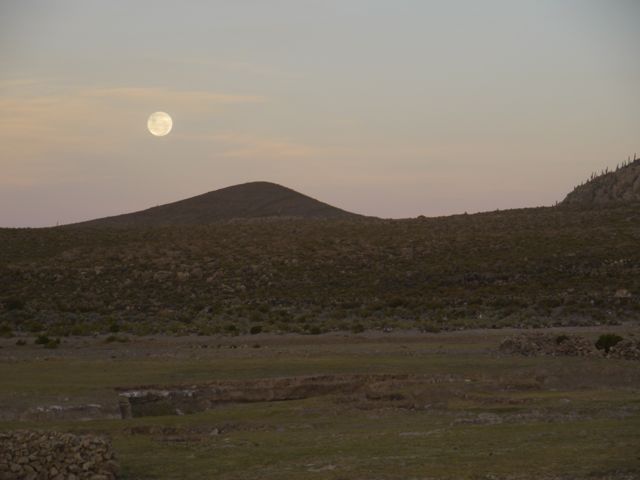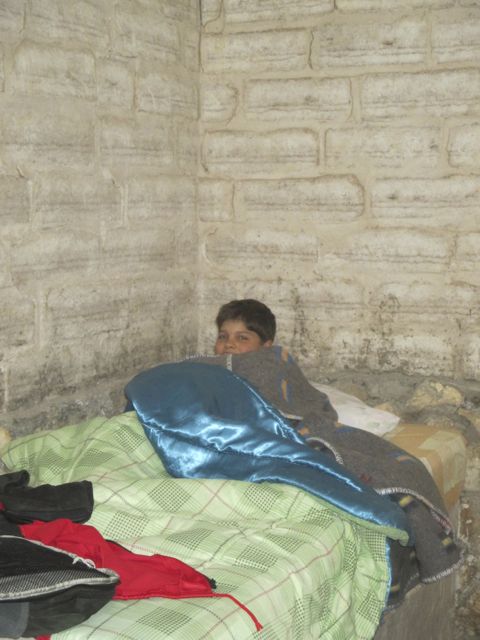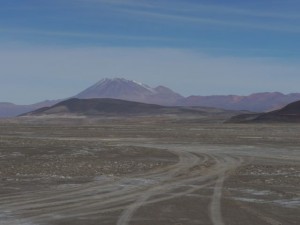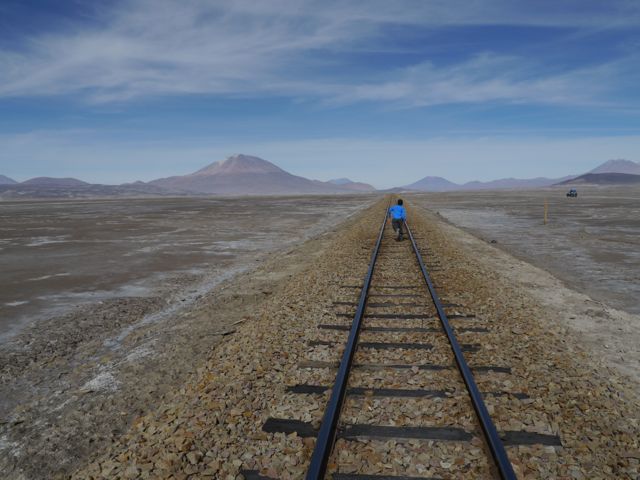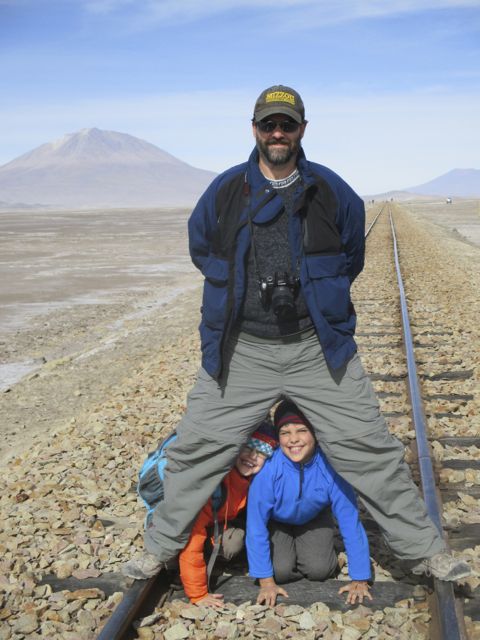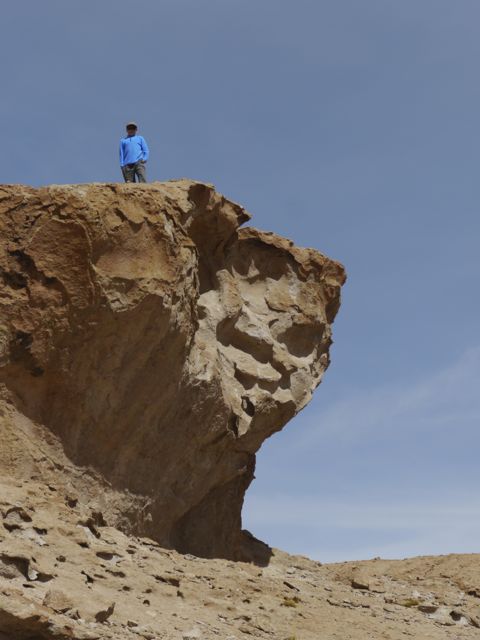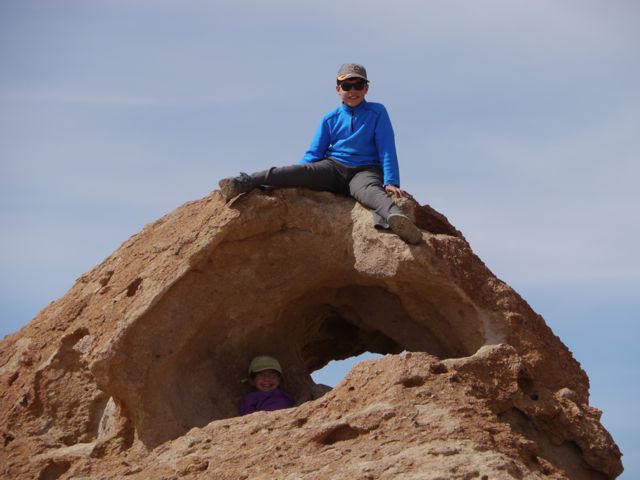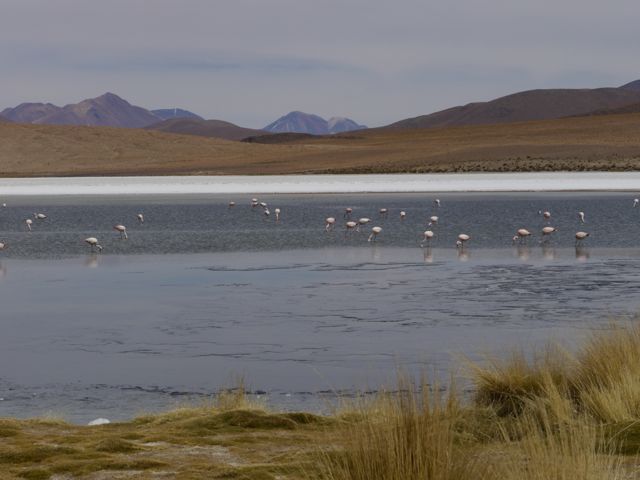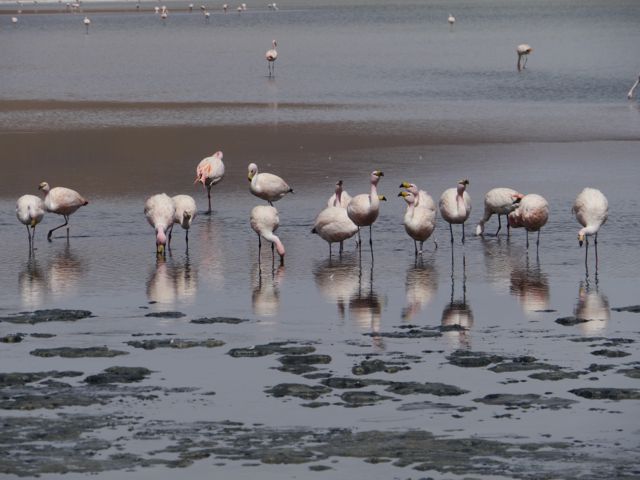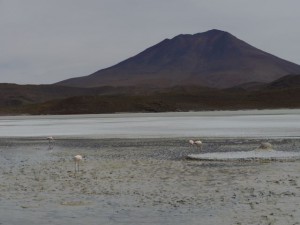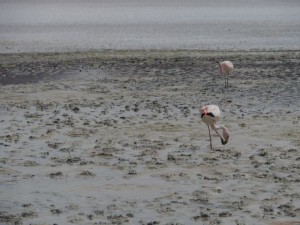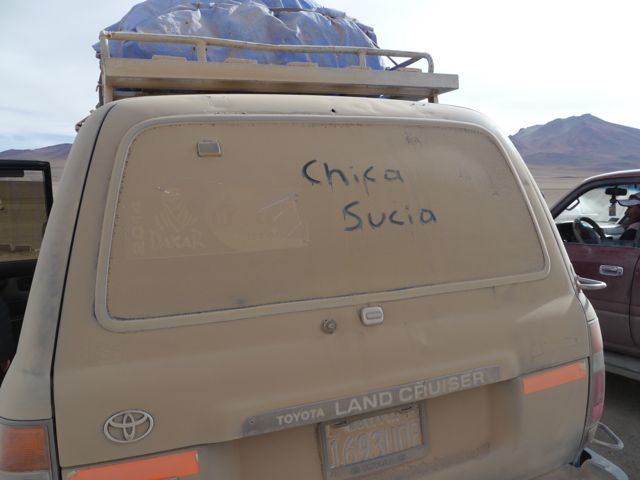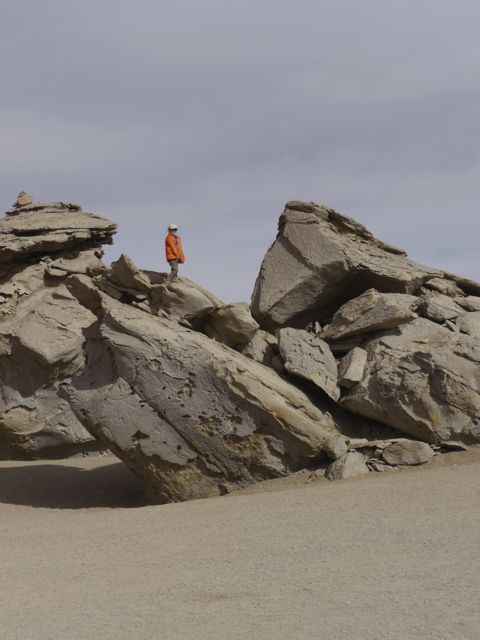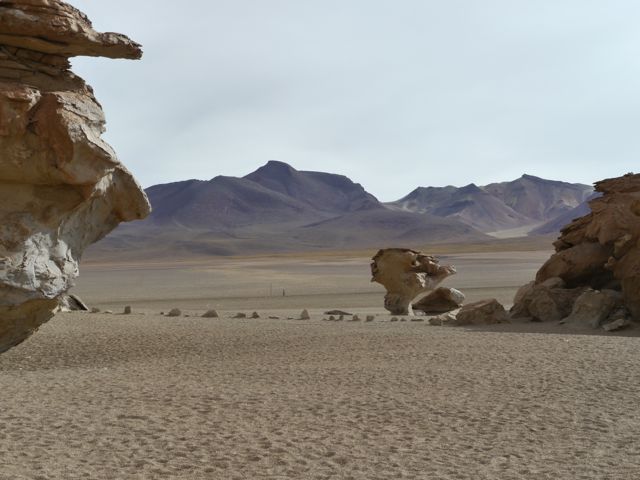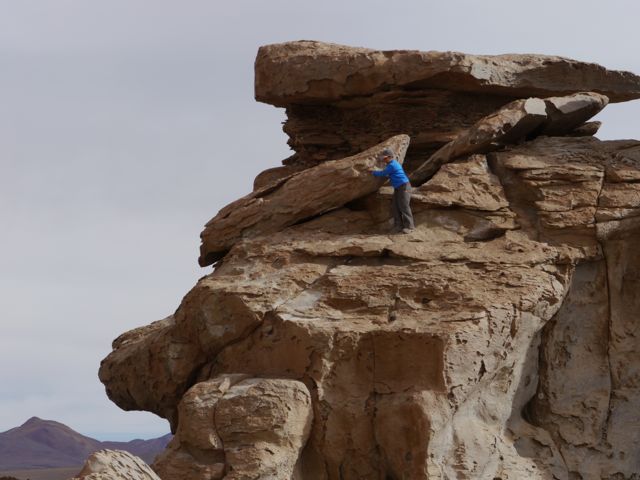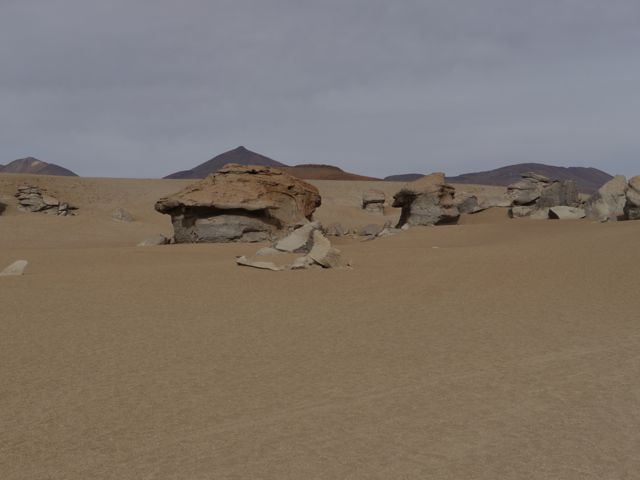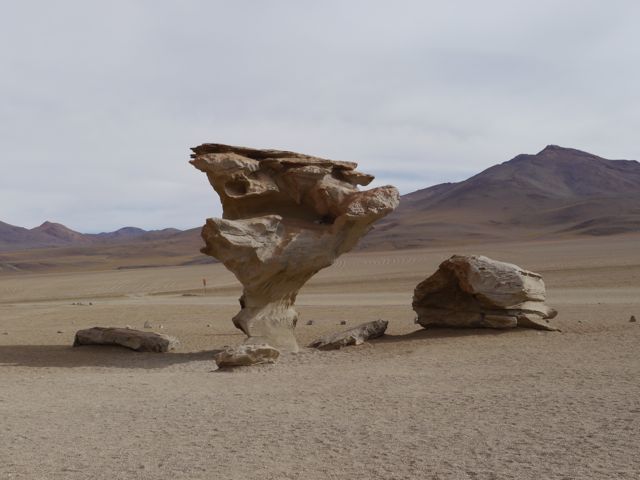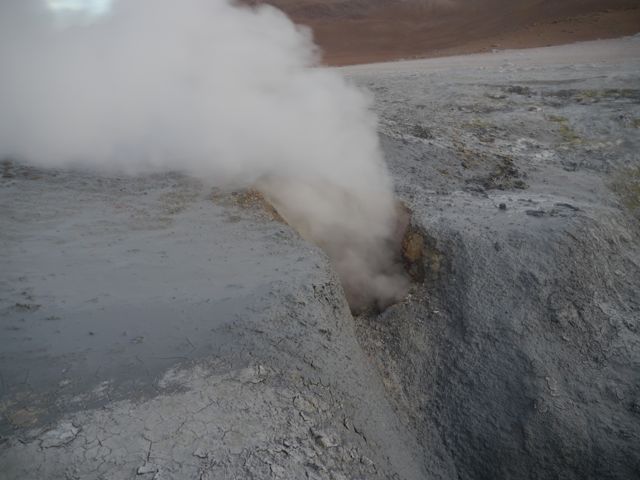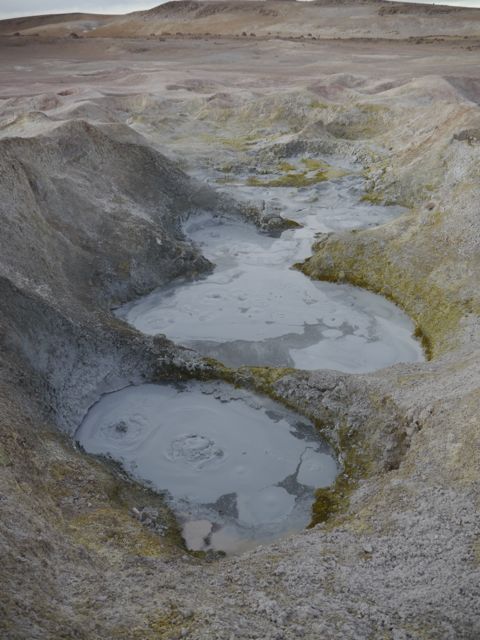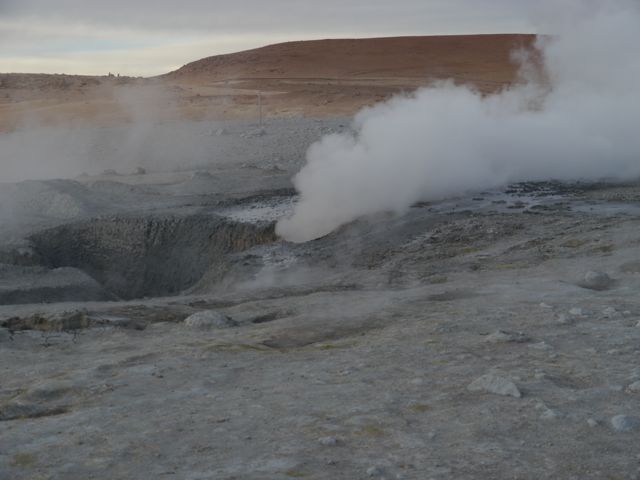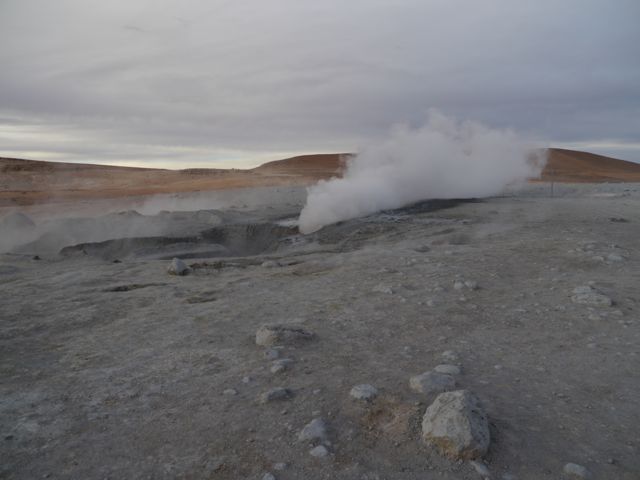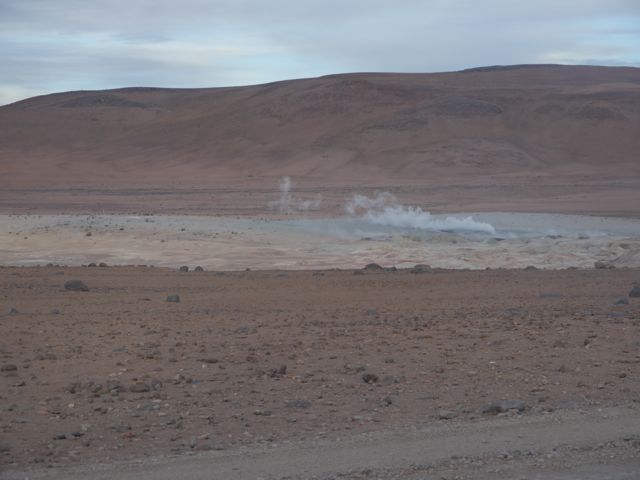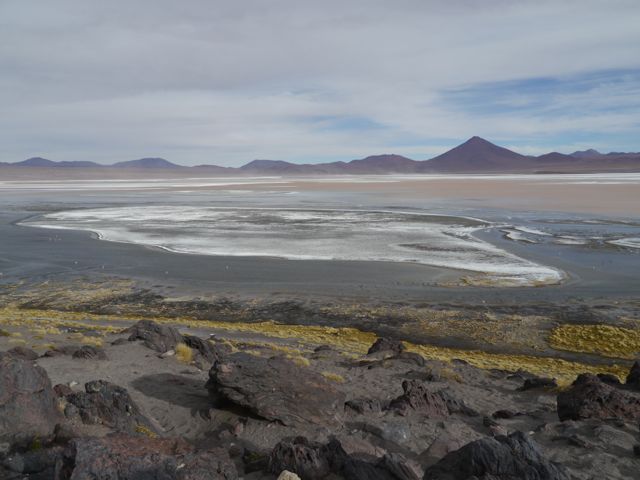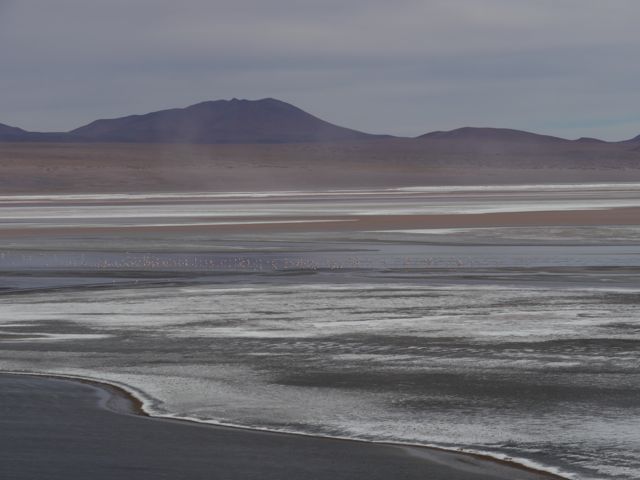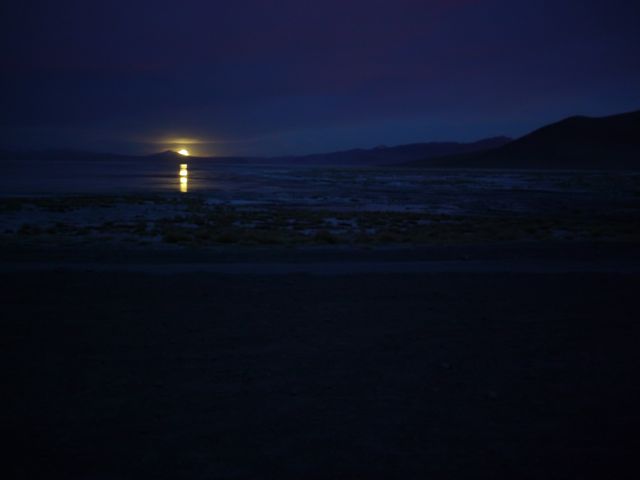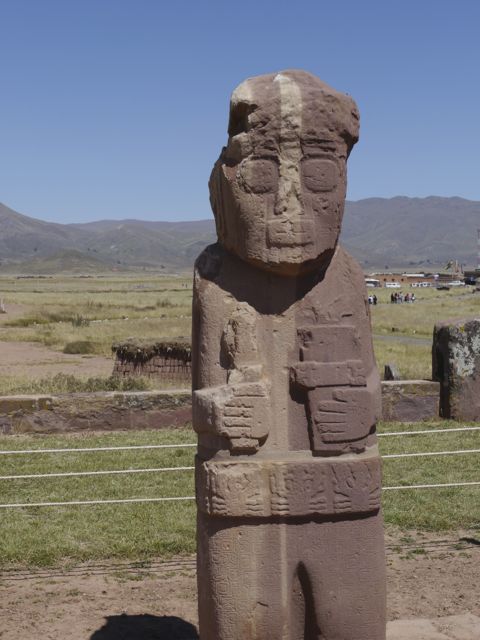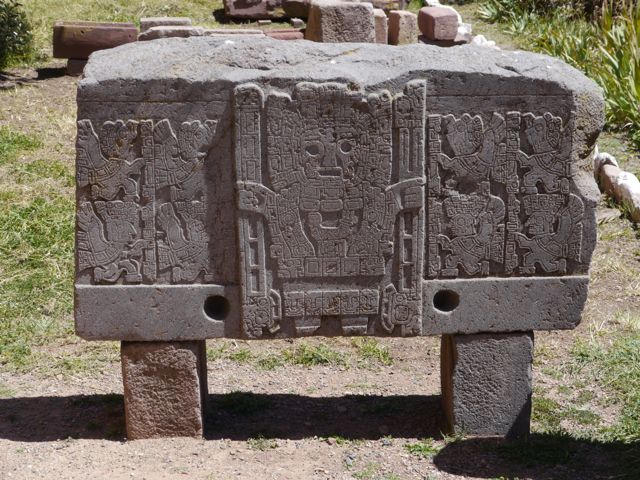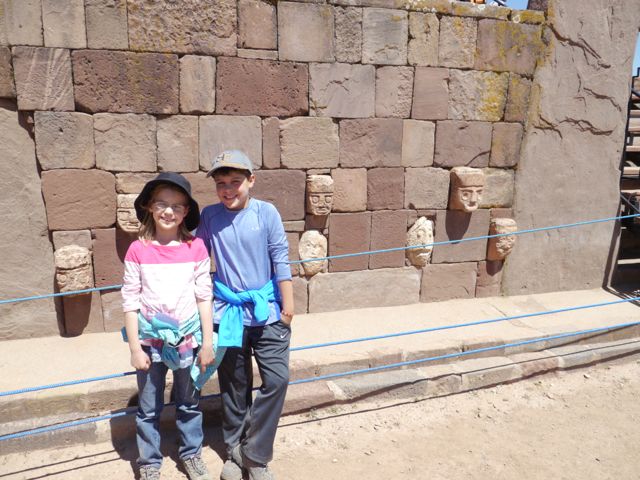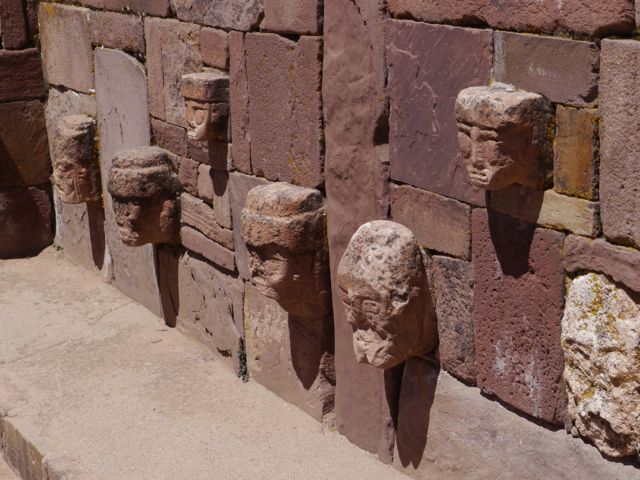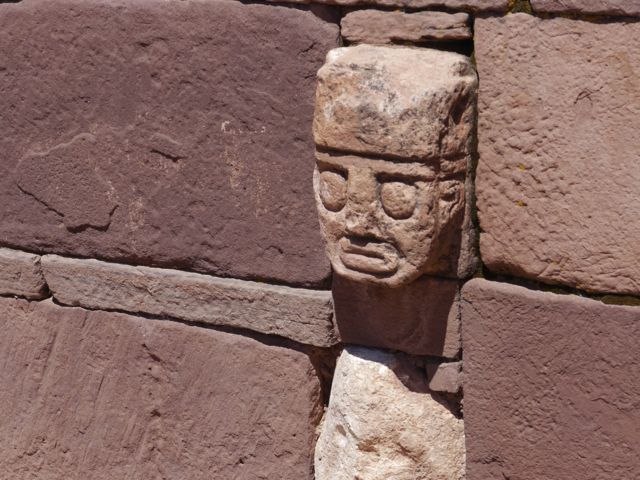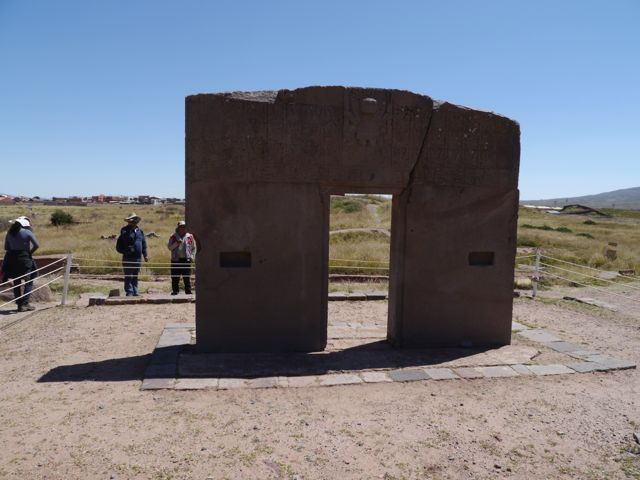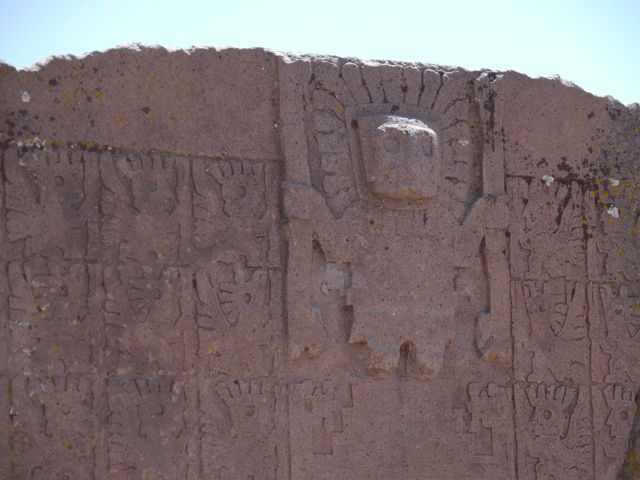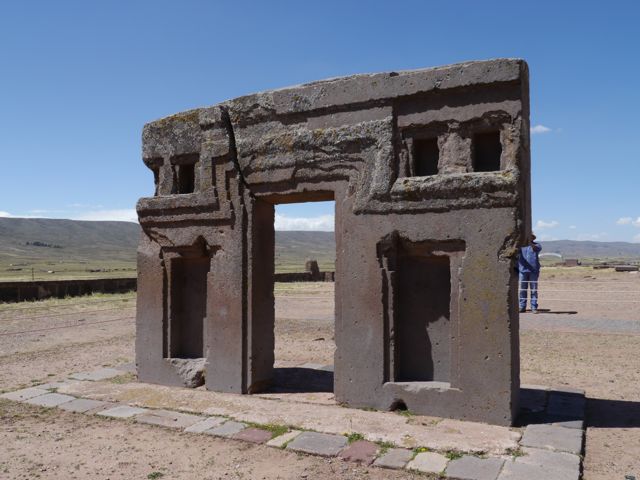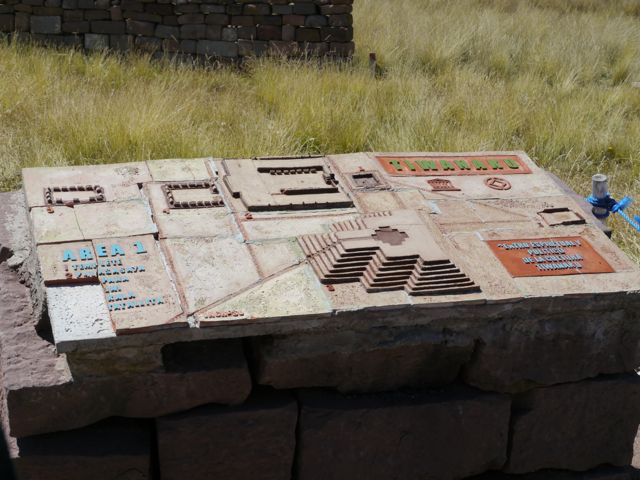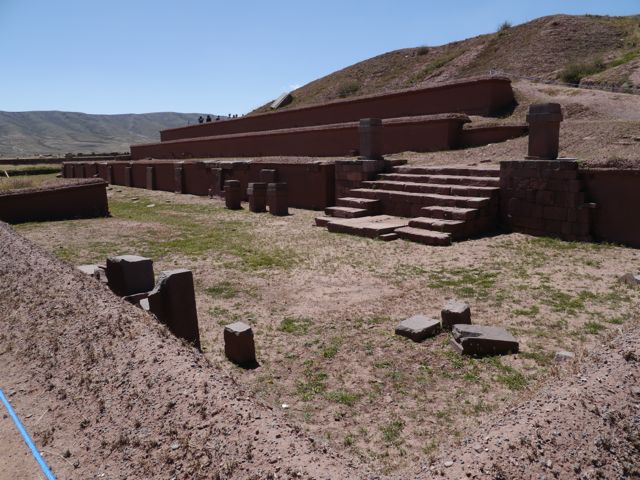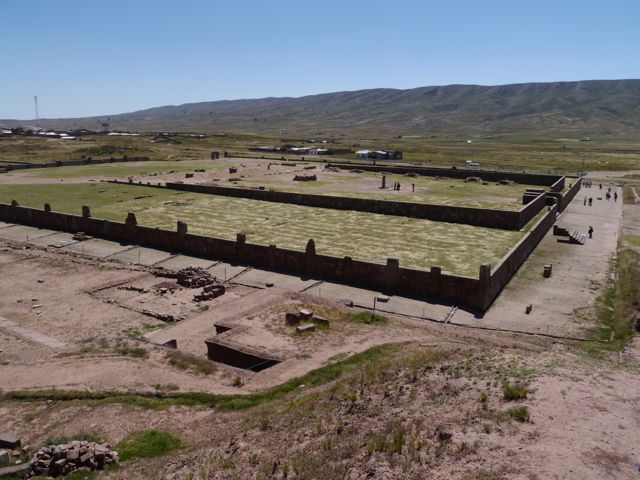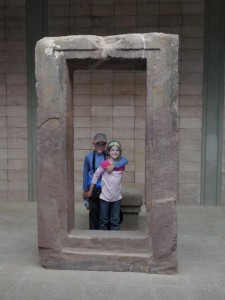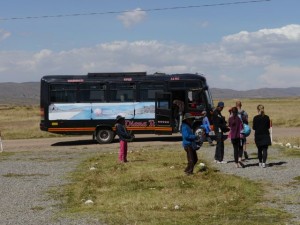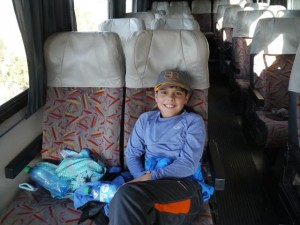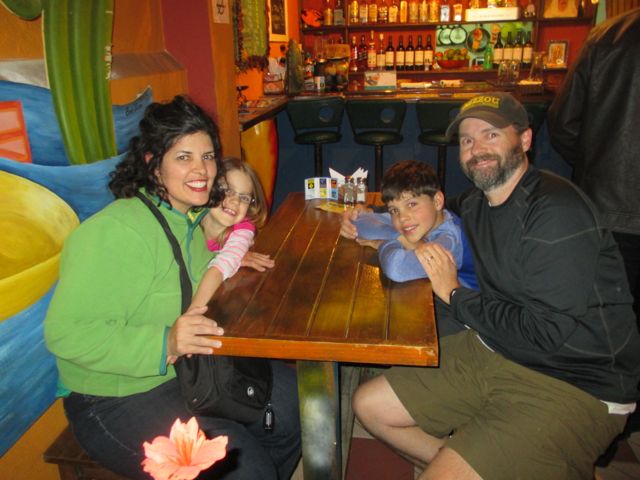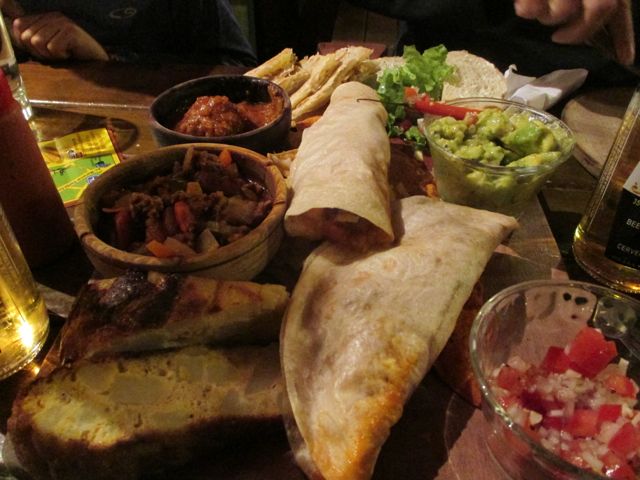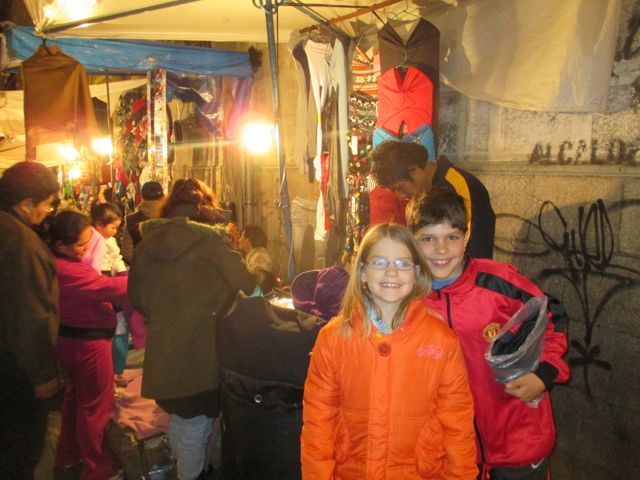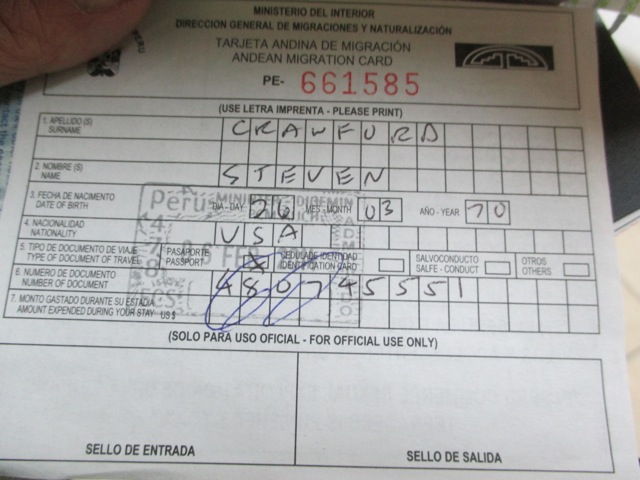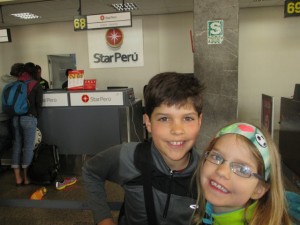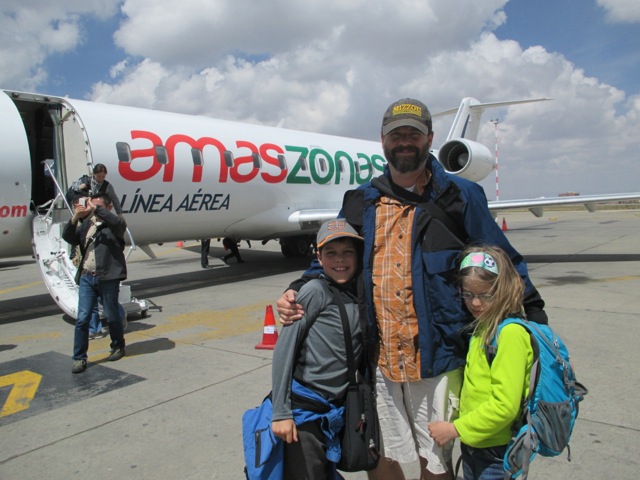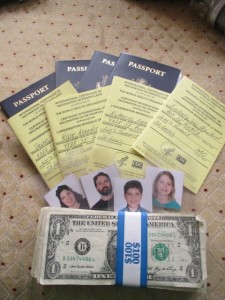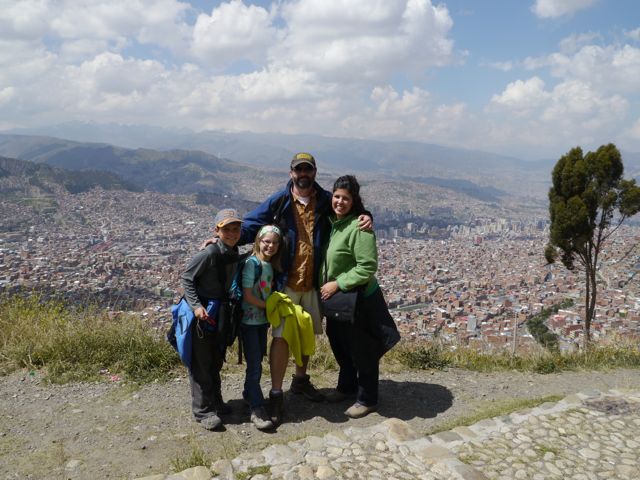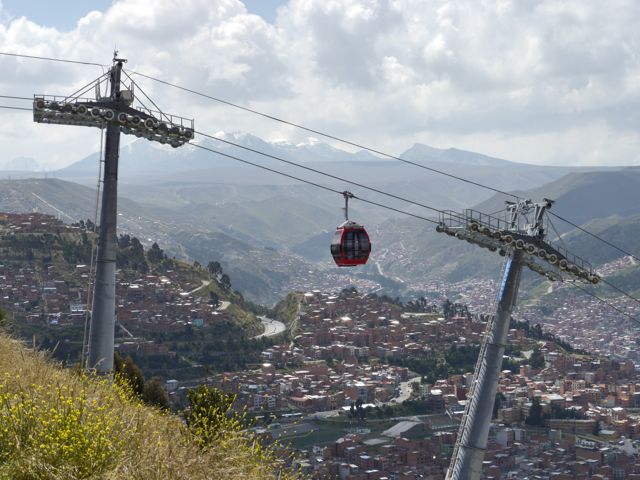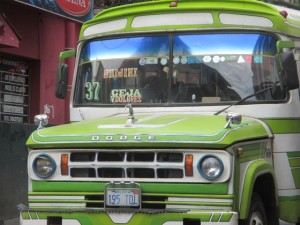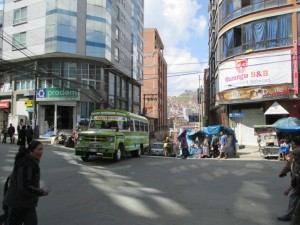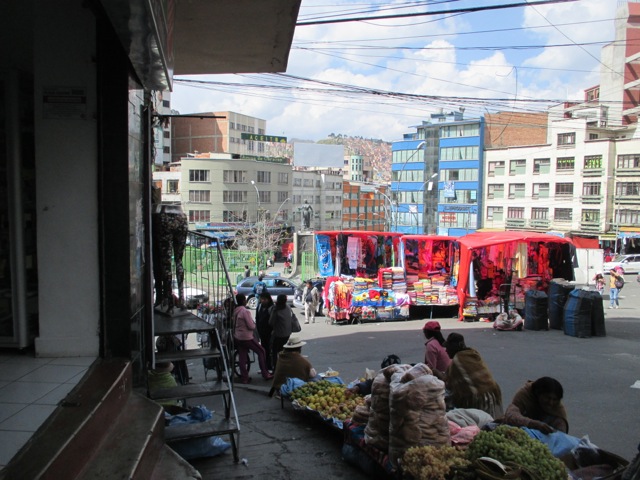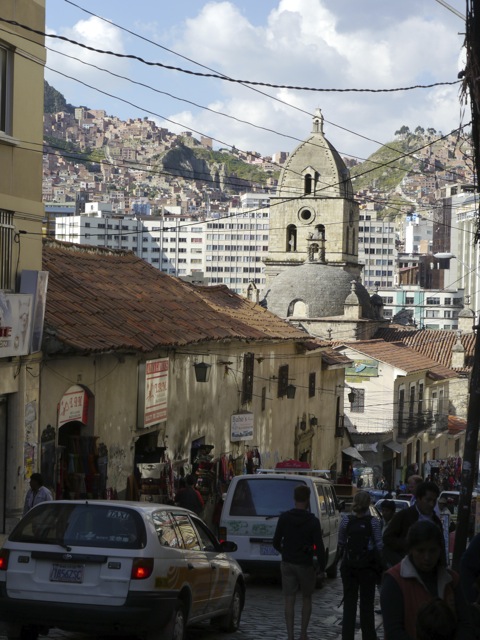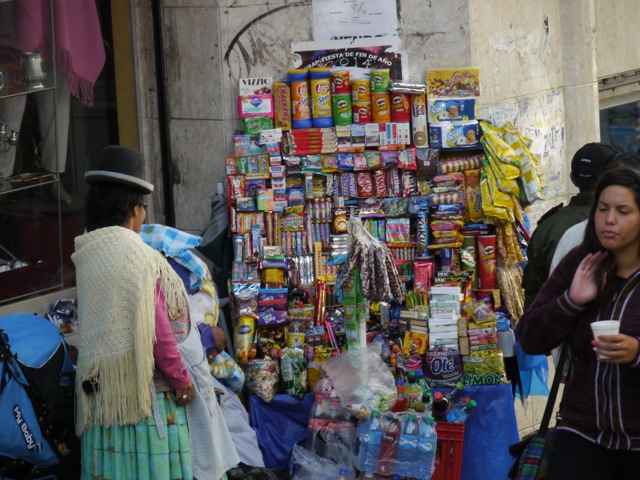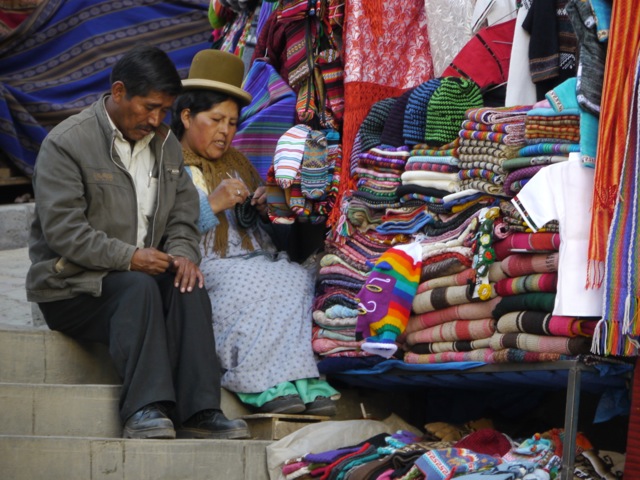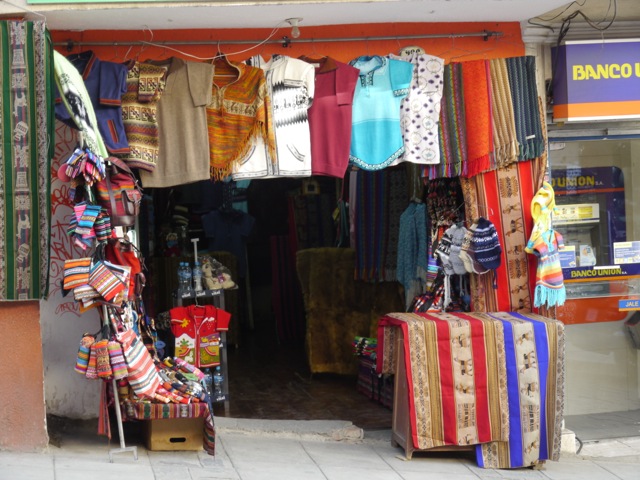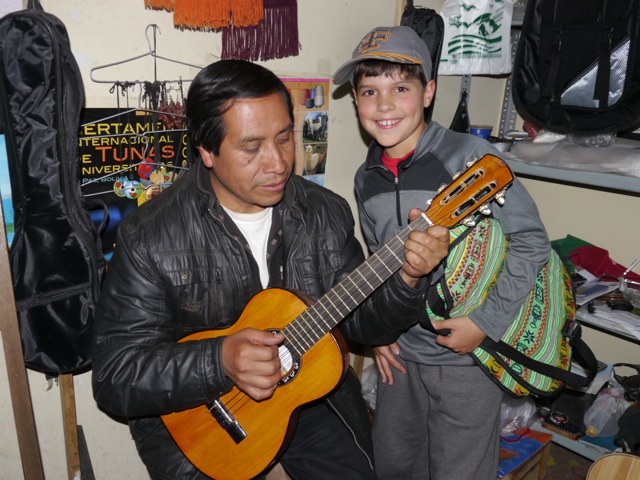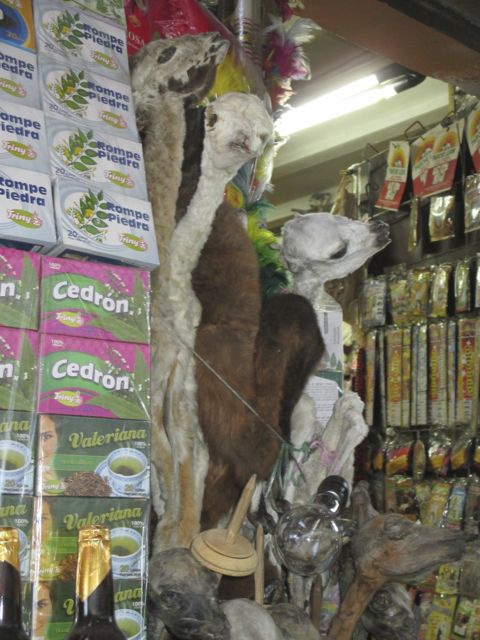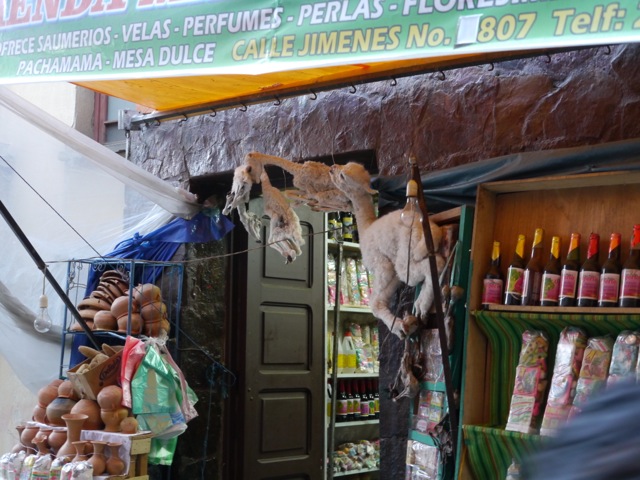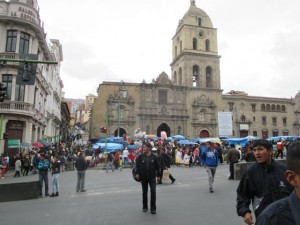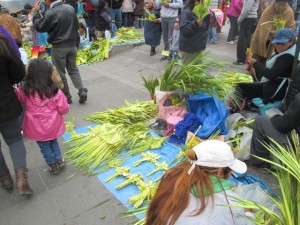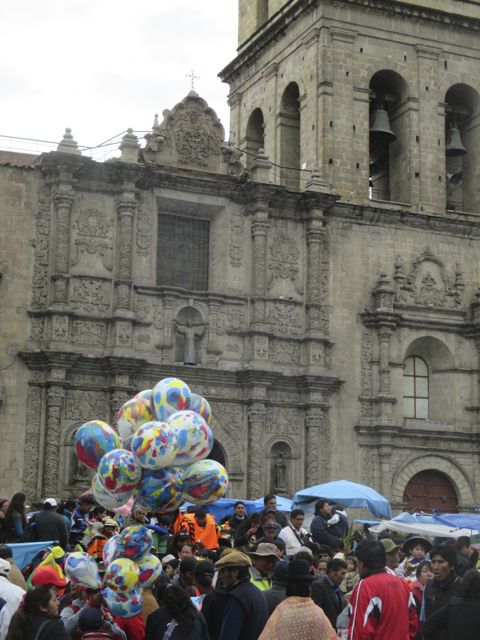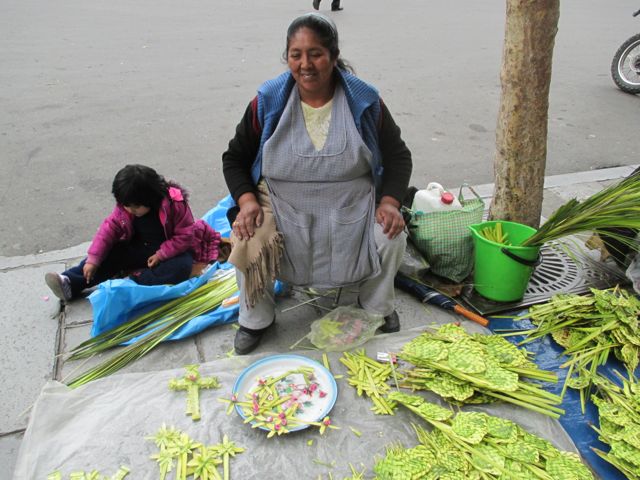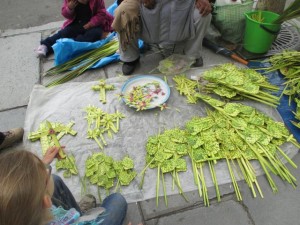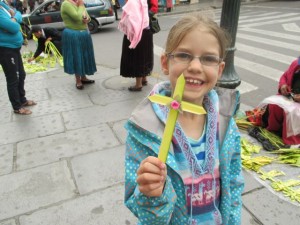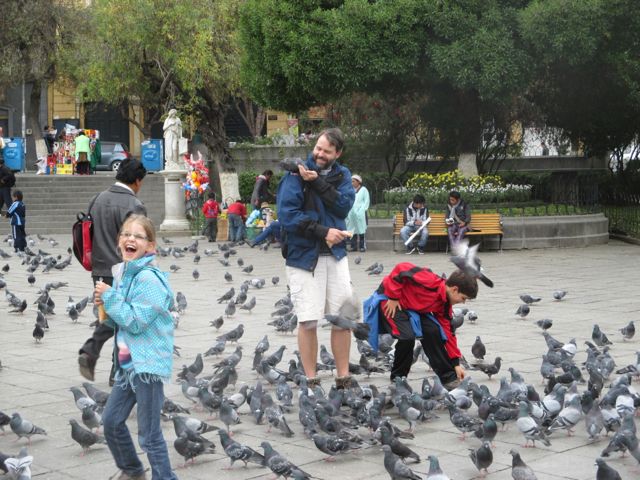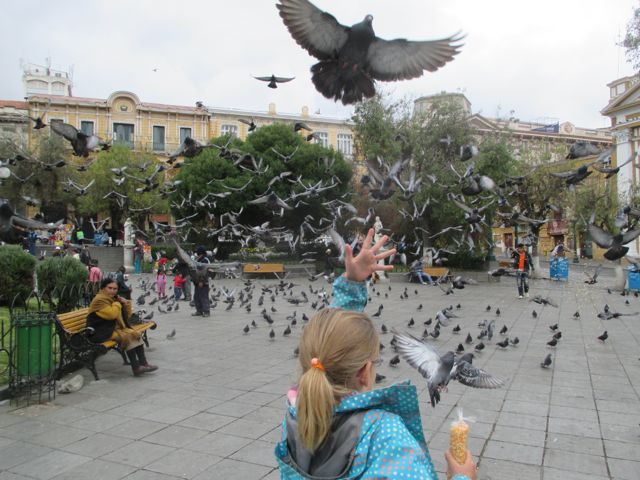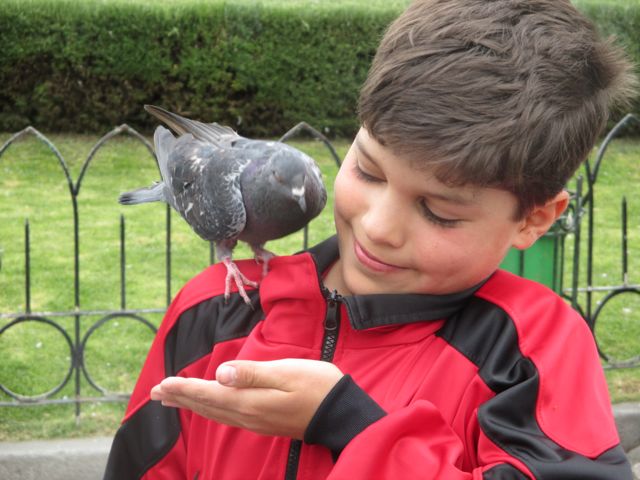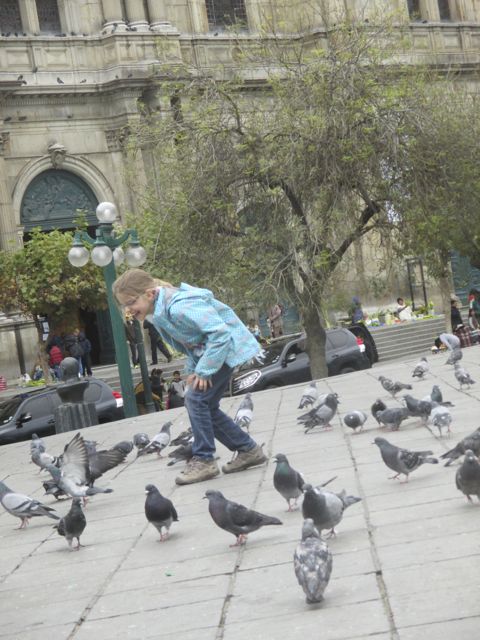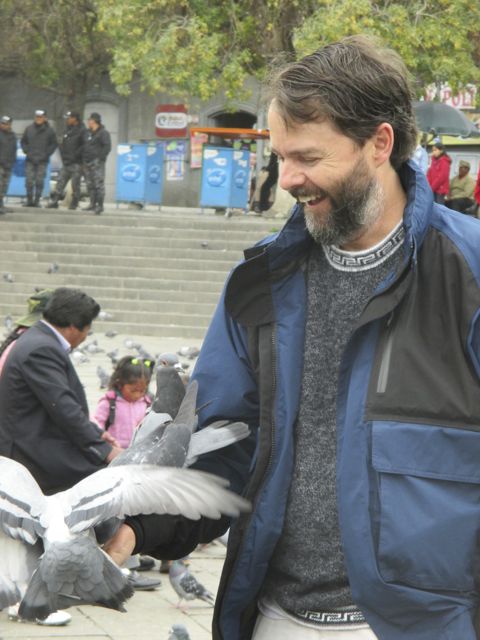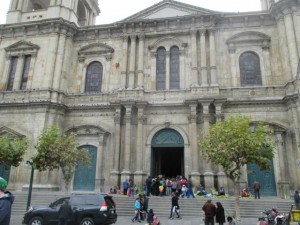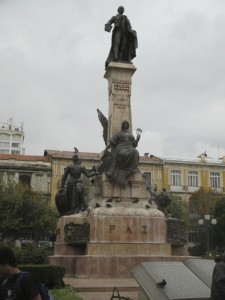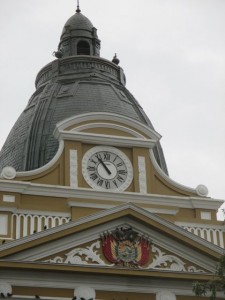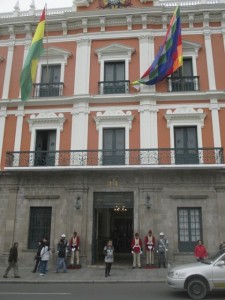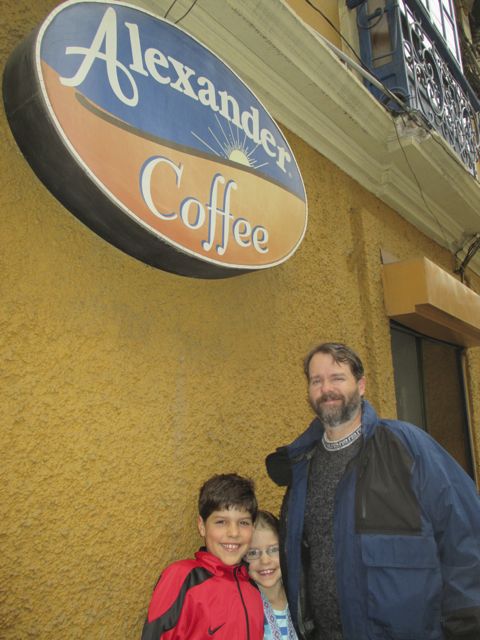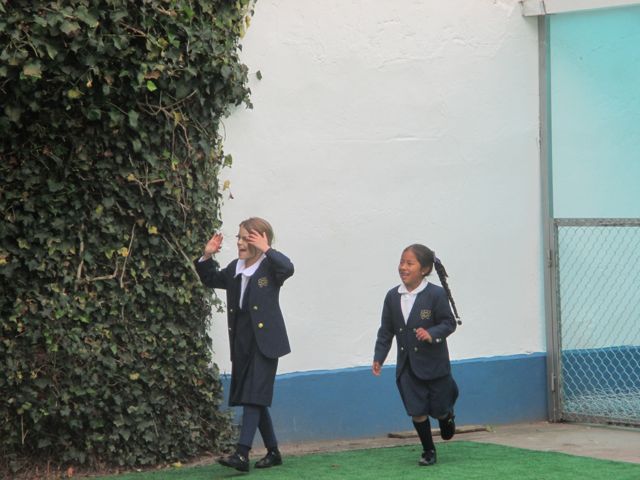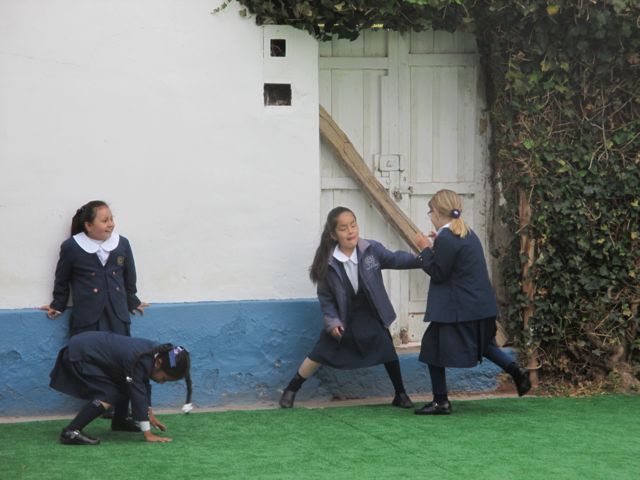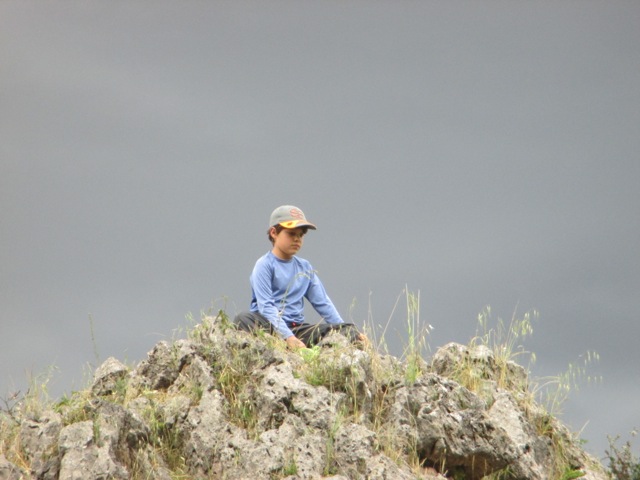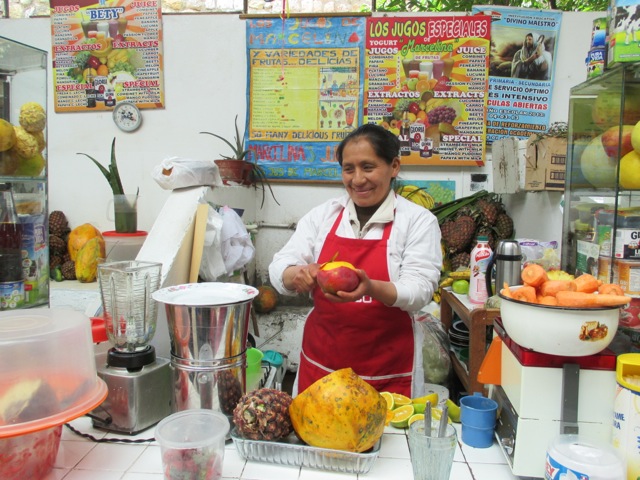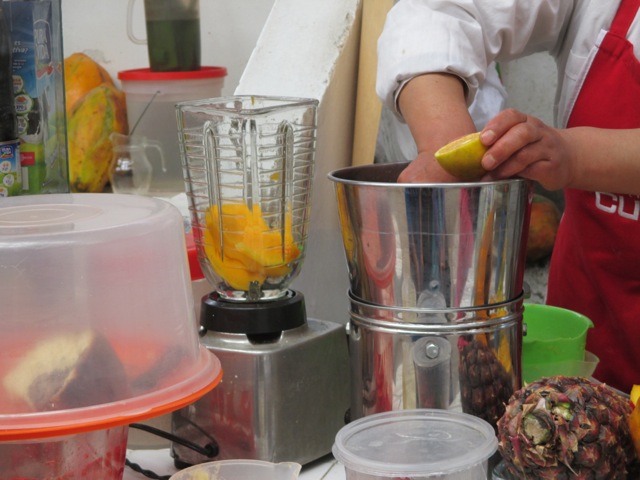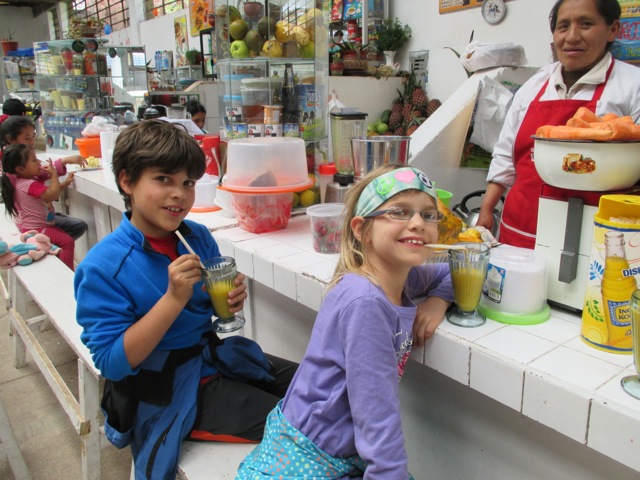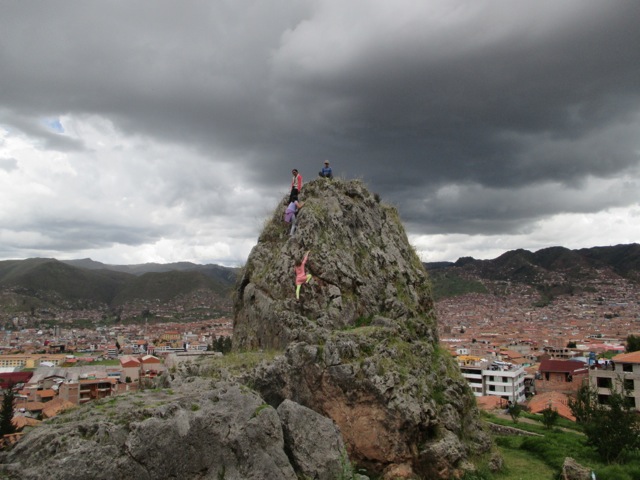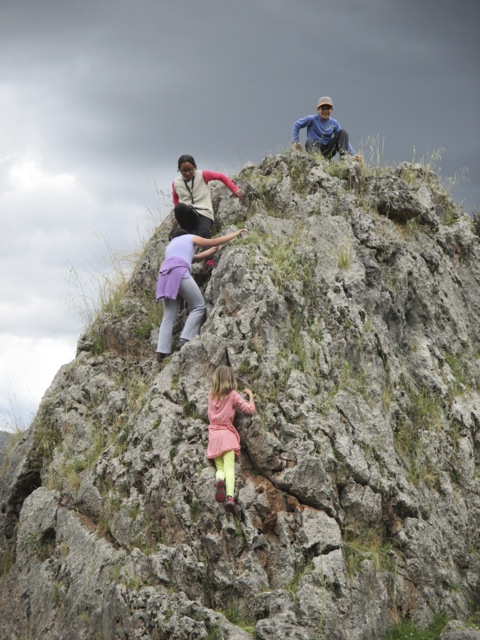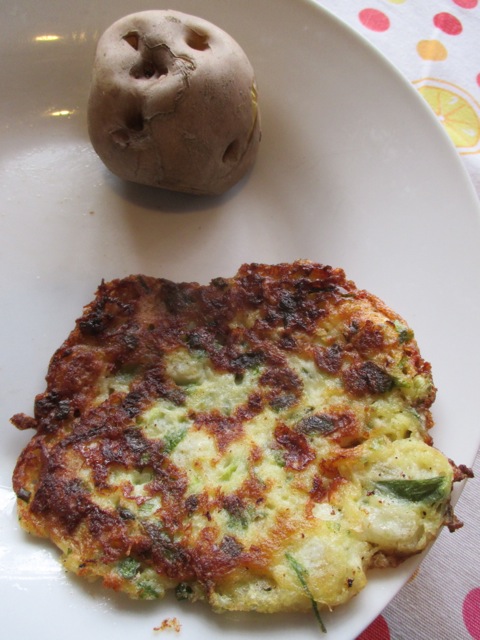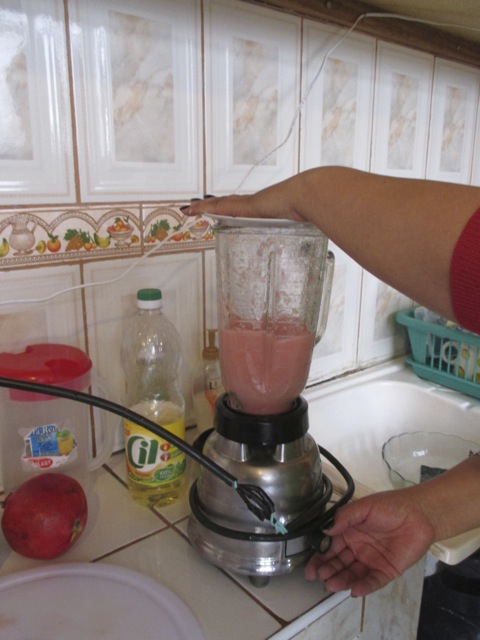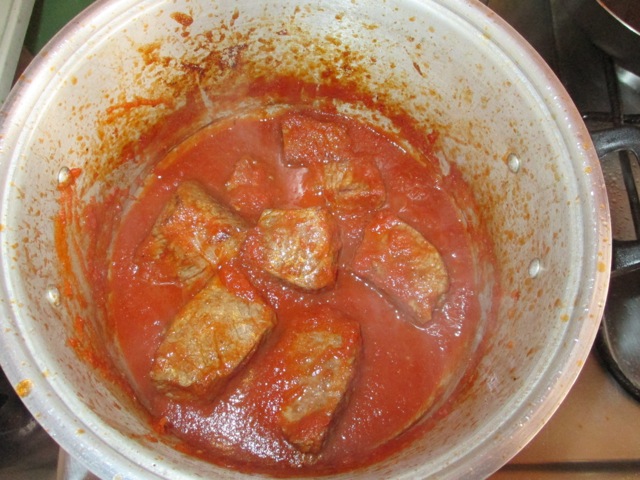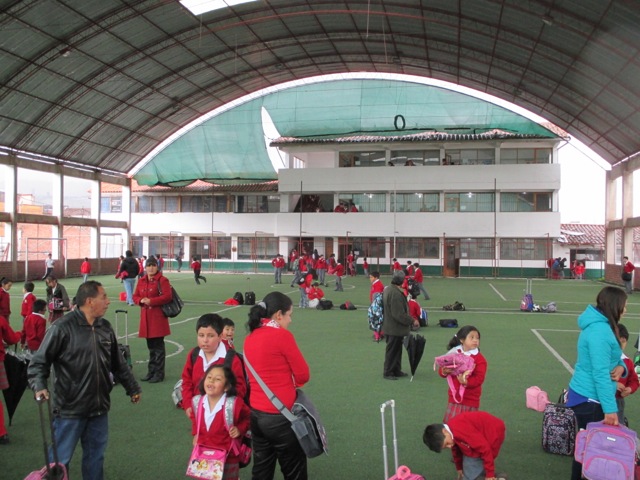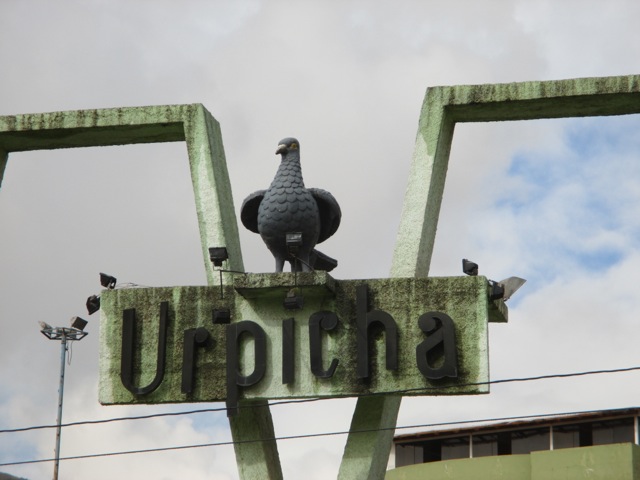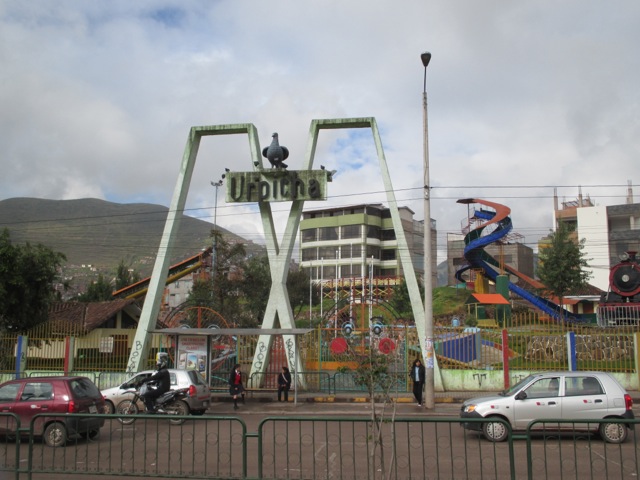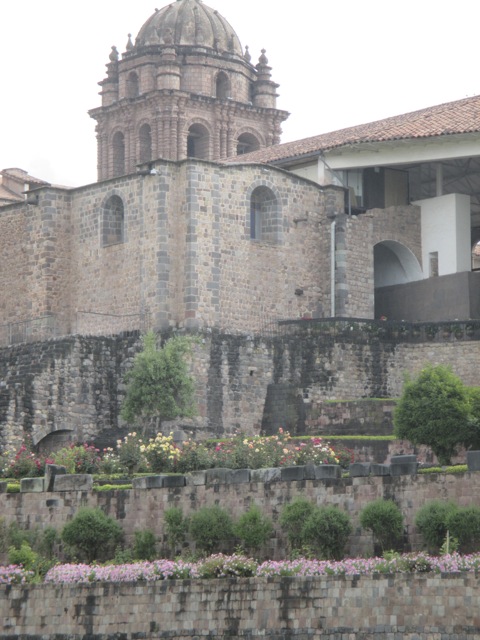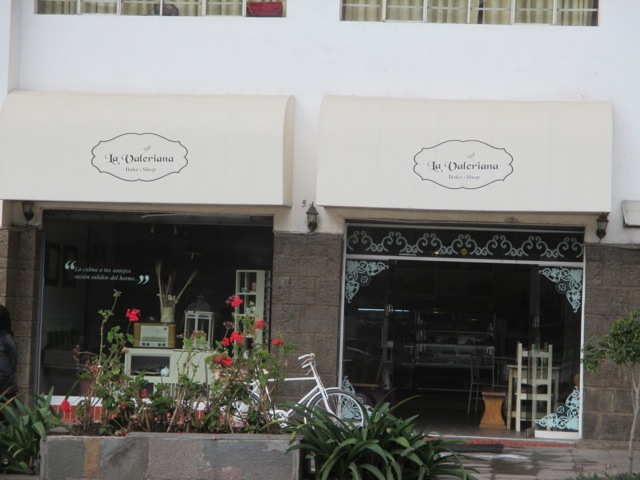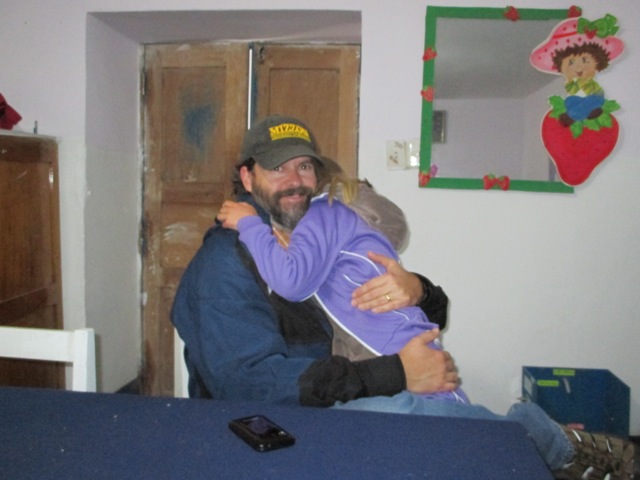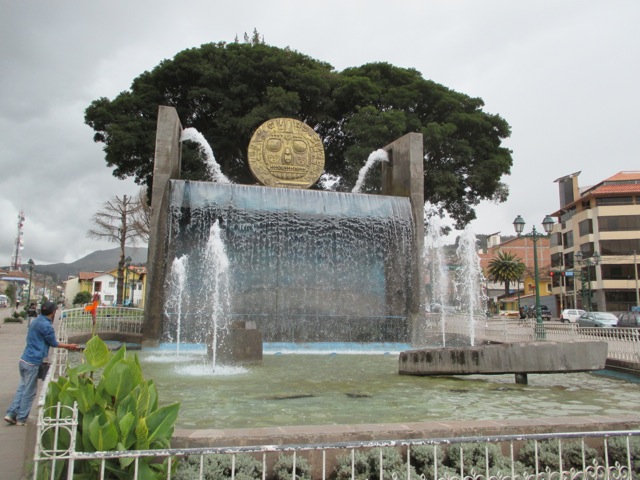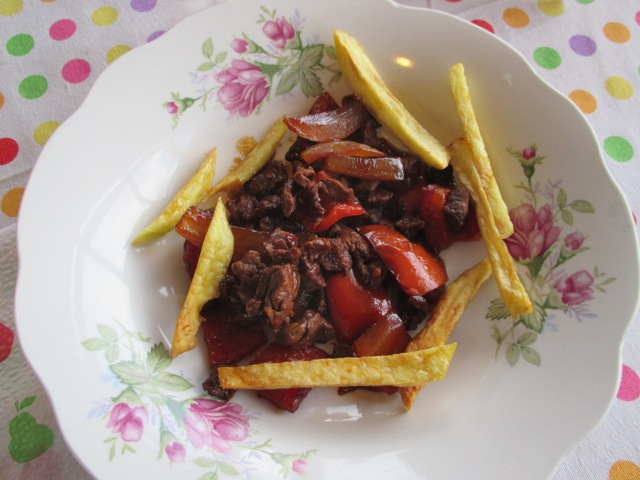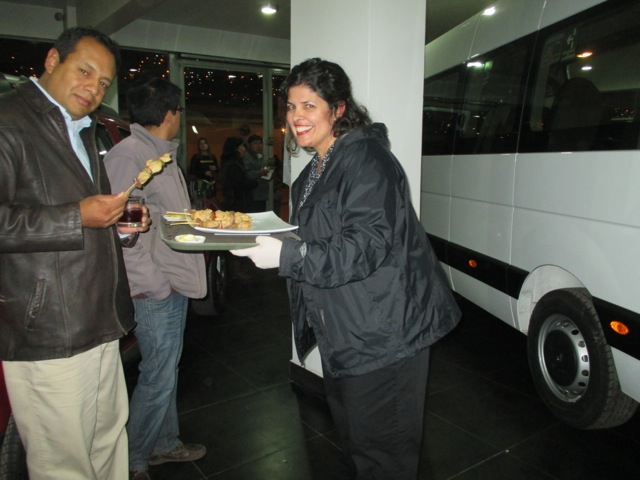Uyuni Salt Flat has been on the top of our list for Bolivia! I had never heard of it before we came to South America, but it is the largest salt flat in world at 4,086 sq miles. It is at an elevation of 11,995 feet above sea level. Words cannot do justice to to this place! I felt like I was on another planet or in a combination of 2 to 4 USA National Parks with a side trip to Mars. It truly must be seen in person to be believed. So here’s our journey:
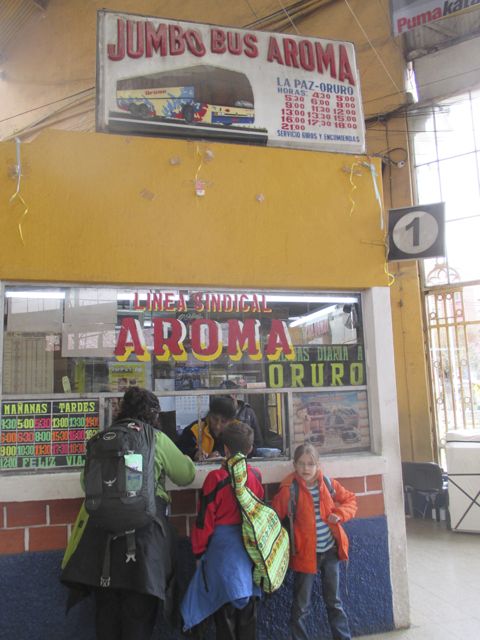
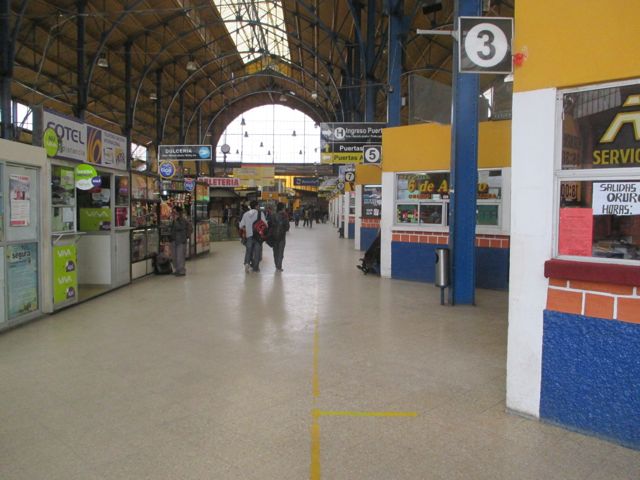
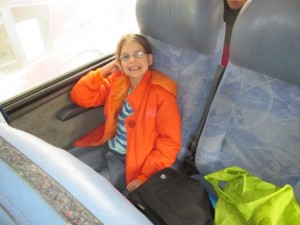
We don’t recommend visits to Oruro, nor Uyuni for that matter, except for getting to the Salt Flats tour. Pretty dusty, dirty little towns that don’t seem to offer much. The wait at the train station was made more exciting by a crazy guy wandering around with a goofy smile, flapping his arms. I couldn’t help but make eye contact with him once, then tried to hid under the brim of my hat the rest of the time.
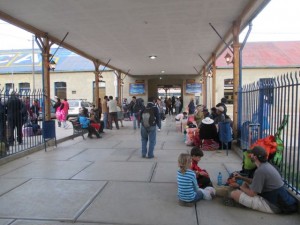
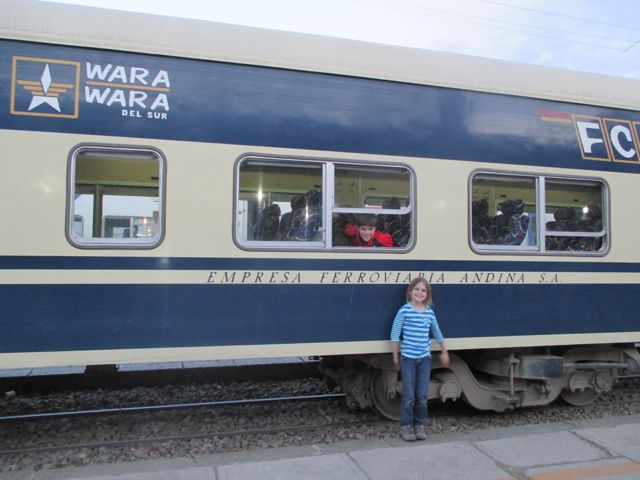

The train ride was great, except for a couple of annoyances… the VHS tape of “Don Gabriel Live”, and somebody who decided to smoke in our car. The smoke and smell really irritated my lungs. Arrival in the town of Uyni at 2:30 am was a bit odd as well, kind of surreal walking around trying to find our hotel with our bags (and our kids) in this place.
We booked a 3 day/2 night tour with Red Planet. It is was the perfect amount of time.
Our guide, Gonzales, was born in Bolivia and raised in Miami. His English was great, and he was an interesting guy. I called him the Bolivian Mike Tyson because, he was missing most of his teeth, and his voice was very high. Something about his eyebrows added to the theme. When we all got in the hot springs, I’m pretty sure he was wearing a leopard skin speedo (the light was bad).
The first stop on the tour was the “train graveyard”. According to our guide, for years Bolivia exported all raw minerals (and ore) to other countries (Mainly Argentina and Chile) for processing as they did not have the technology to process it themselves. In the 80’s, somebody decided they were giving up too much profit and decided to stop exporting raw materials (and importing more expensive finished product). A war ensued over it between Chile and Bolivia, and the trains used to export the raw materials were for ever more left in this place. Now it’s kind of an unofficial park and tourists are allowed to climb on the remaining junk. I can tell you this would never happen in the States… this place is neat, but it’s screaming personal injury.
The next stop was a place where the salt is processed for sale. I can’t remember the name of the town, but it was interesting to see how crude the facilities are even still today. They basically shovel the salt into piles, where it is soft from ground water percolating through. Then they truck the salt to this place where they process it. There is a small building with what looks like 3 fire places along the outside wall, this is where they cook the salt to clean it. Inside the building, over top of the 3 fireplaces is a large metal pan. They fill the pan with salt, and cook it there, a guy standing in it, moving it around with a shovel until is “pops”. Then they grind the salt in what looks like a mini concrete mixer, and they add another ingredient (Maca?), which helps kill the bacteria (1 TBL per 5 gallon bucket). Evidently, if you eat the salt raw, you get really sick. Then they put the salt from the grinder into little plastic bags, and seal the bags with an open flame from an LP gas container (they call them balloons here). All that work for 1 Boliviano… (which is 15 cents US).

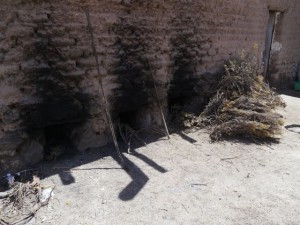
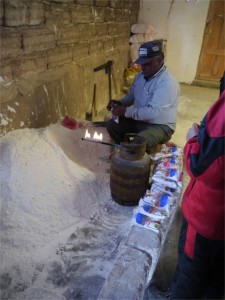
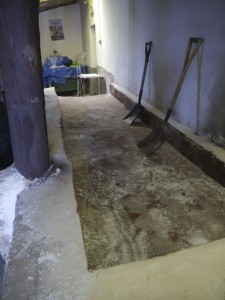
After that, we drove over the the place where we ate lunch. It seemingly is a closed hotel build entirely of salt. There were a few other places around providing I guess too much competition. Our guys must have rented the dining room to host our lunch. Our food was prepared in the morning in Uyuni, but it was delicious. We also discovered that the “Kris” brand ketchup in Bolivia is our favorite, FWIW.
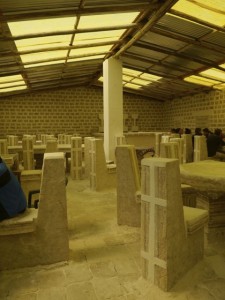
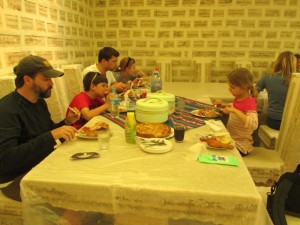
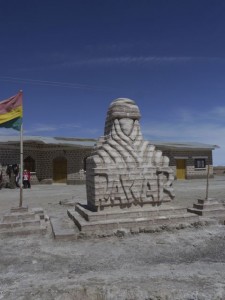
Next, we walked down to the edge of the Salt Flats themselves, while the guides cleaned up lunch. It was quite interesting walking along the ground where sandy desert gradually turns into moist salt. At this place, you could see where salt had been shoveled into piles for processing. We were strongly encouraged not to walk on the piles for pictures… they look really cool though.
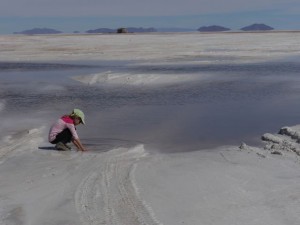
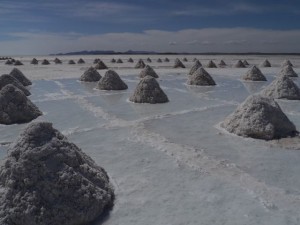
Once in the Salt Flats, it is white salt for as far as the eye can see, save for the mountains in the distance in certain directions. Very odd, almost reminiscent of being in a boat out in the ocean or a great lake.
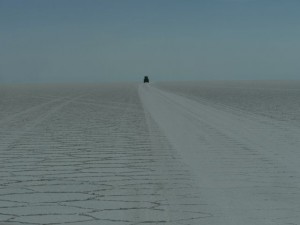
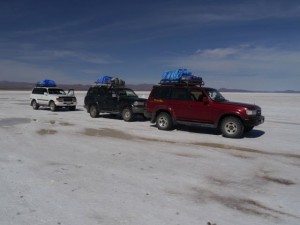
After about an hour of driving, we could see tiny black dots on the horizon, these turned out to be “islands” in the Salt Flats, and we got to visit one of them… the rest are protected.
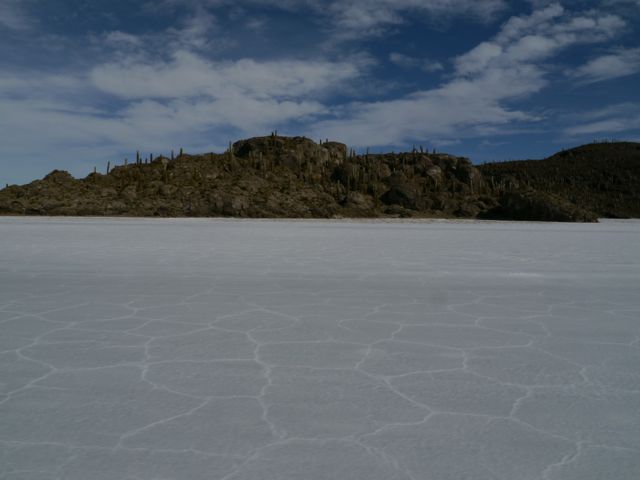
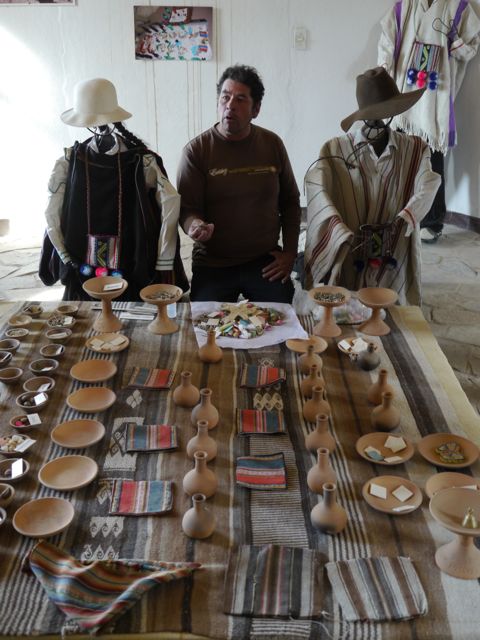
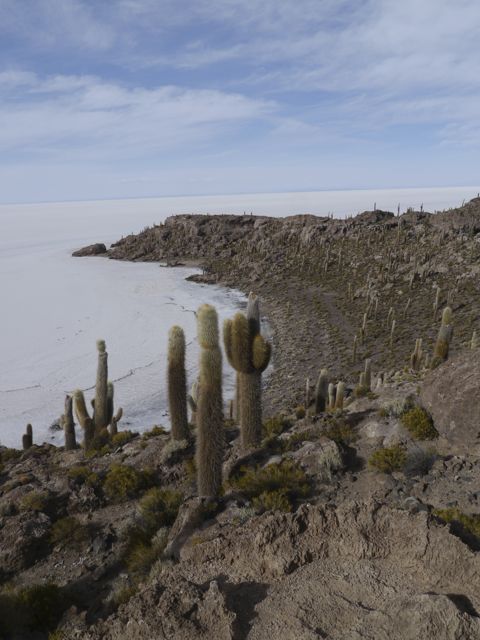
After the hike around the island, we proceeded to the place just south of the parking lot for the island. This is the traditional place to take “perspective pictures”, or funny pictures that take advantage of the fact that the salt flat is flat, and it messes with your ability to gauge depth via parallax. We did alright.
After the fun pics, we jumped back into the trucks and headed to our hotel for the night. It was just outside the salt flats, and the hotel was built from salt! It was “rustic”, but fun, with a large dining hall, and rows of bedrooms around the edges. We got the “Family Room”, which was jammed with single beds (5 or 6 total). AND, we even had our own bathroom. The kids loved it. Dinner was good, Bolivian casserole, and we all slept great due to the cold and the many blankets they put on the beds.
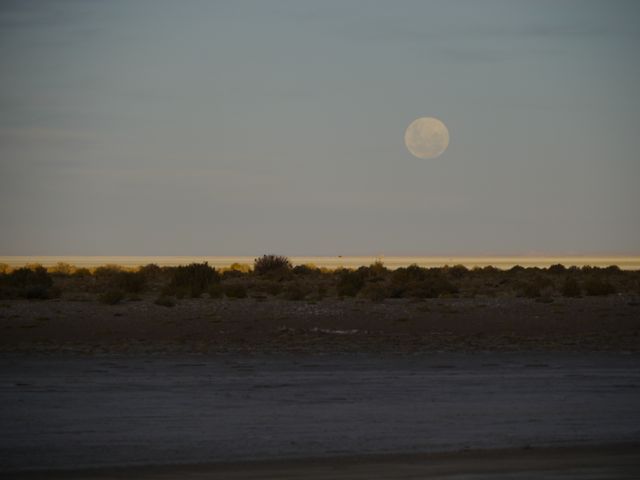
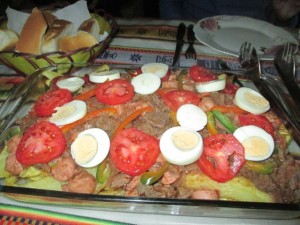
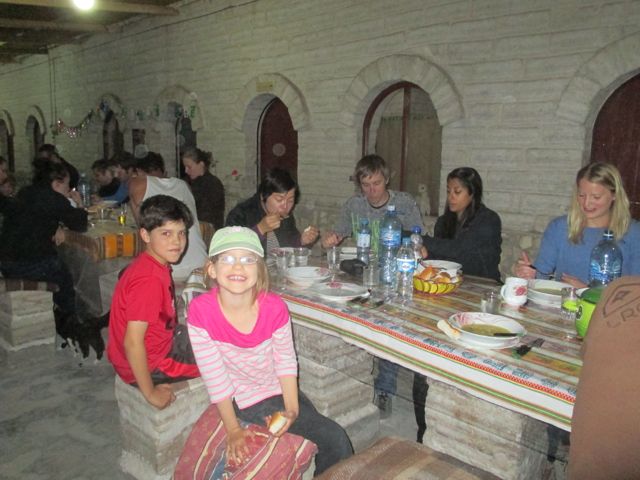
It was our first time sleeping in a salt hotel!
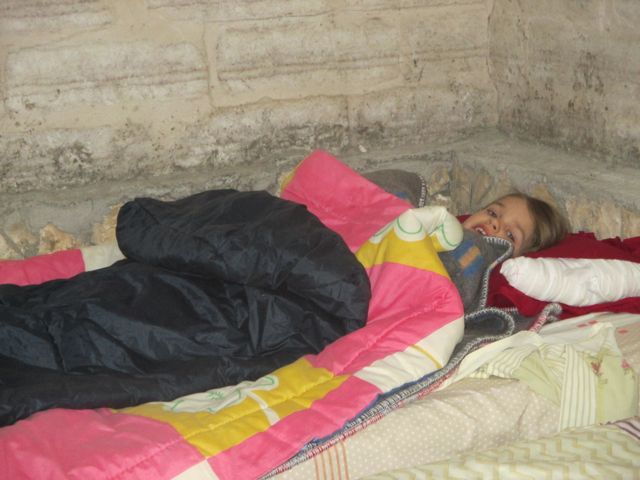
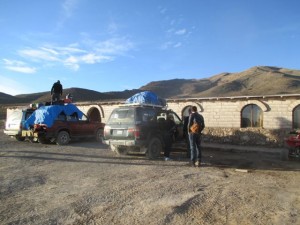
For Day 2 of our tour, we continued out of the Salt Flats, and into the Volcanic area of Bolivia. It was a day of incredible views, climbing, pink flamingo viewing, and geothermal feature admiring (geysers, mudpots, fumerols, hot springs etc). The pictures can do most of the talking here!
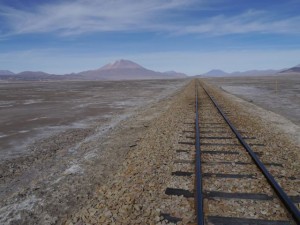
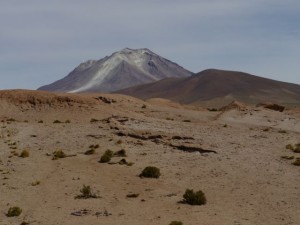
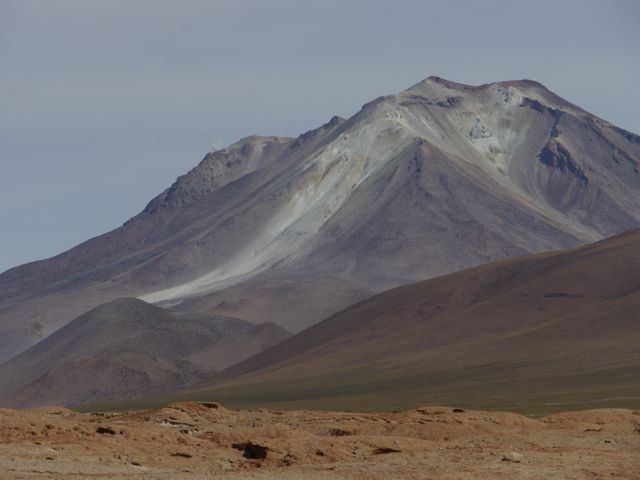
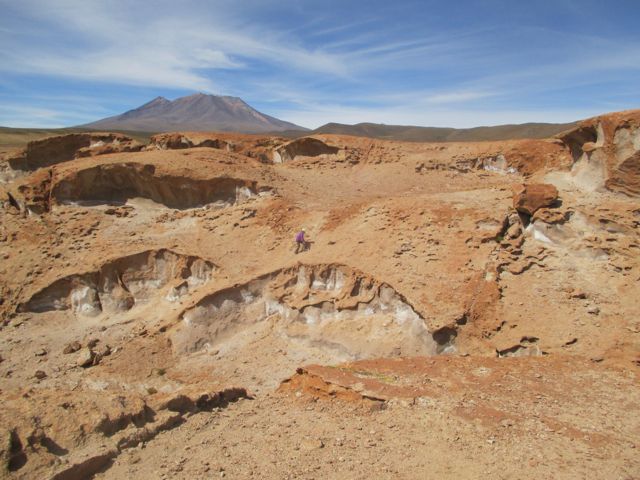
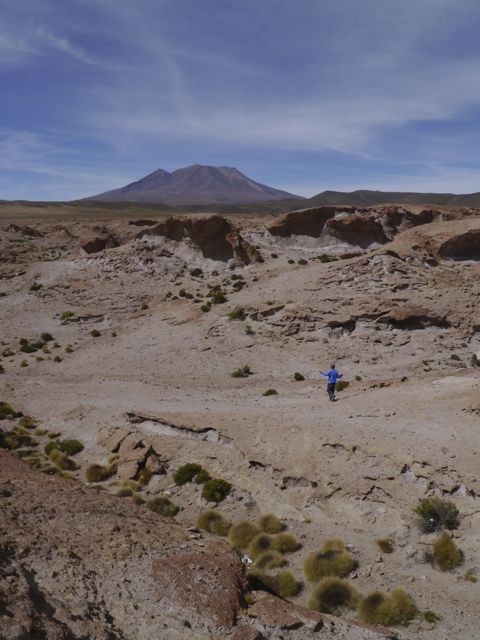
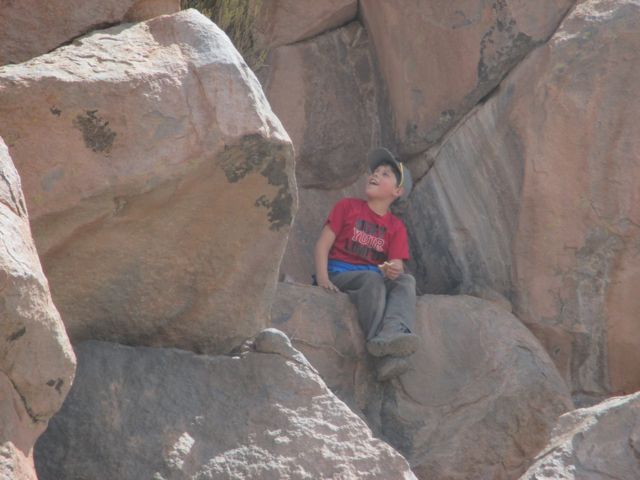

The rest of day 2 will be shown as a gallery. After several lagoons and 1000’s of pink flamingos, we headed up to the place we would be spending the night. It was another rustic hostel on the edge of a lagoon. Across the street, there is a hot spring that tourists (so choosing) can enjoy. On the way, we stopped at an area that would give Yellowstone a run for it’s money in terms of geothermal features. The main difference being, we were the only ones there, and there were no fences or boardwalks here. We saw these things as if we were the first humans to discover them. This was both amazing and frightening. Our guide led us between two mudpots with maybe 6 inches of land between? Easily, somebody could have fallen into on of those pots. It was amazing. Also, the benefit of staying where we did is, we got to enjoy the hot springs at night, under the stars and full moon, with no competition. The next morning, we saw others lining up to enjoy the hot springs… it was packed.
This place is a bit difficult to get to, but is absolutely amazing! If you want to visit Bolivia, it’s a must, and you can even have them drop you at the border of Chile on day 3 if you so desire. Logistically, that would make a ton of sense if you wanted to visit Chile as well. BTW, it’s free for US citizens to enter Chile as of this writing. (Bolivia was 135 each and Argentina 160 each).

